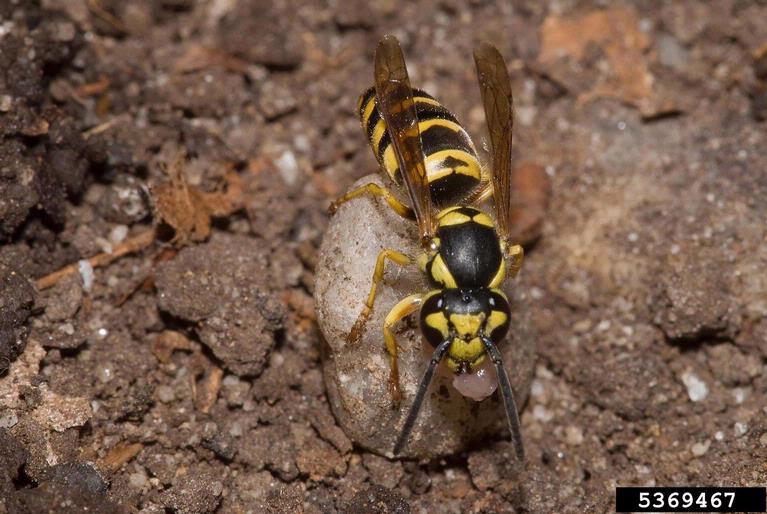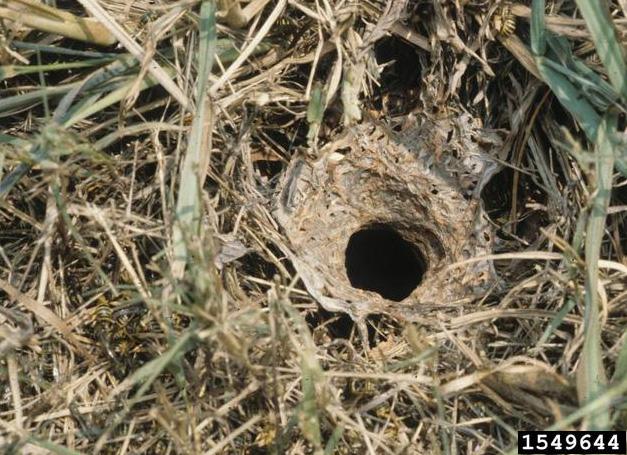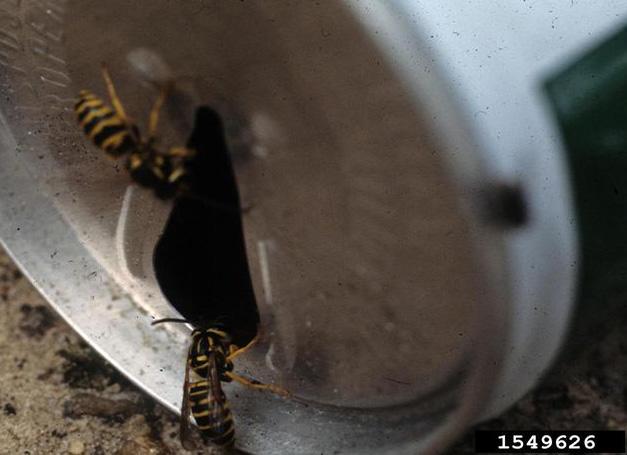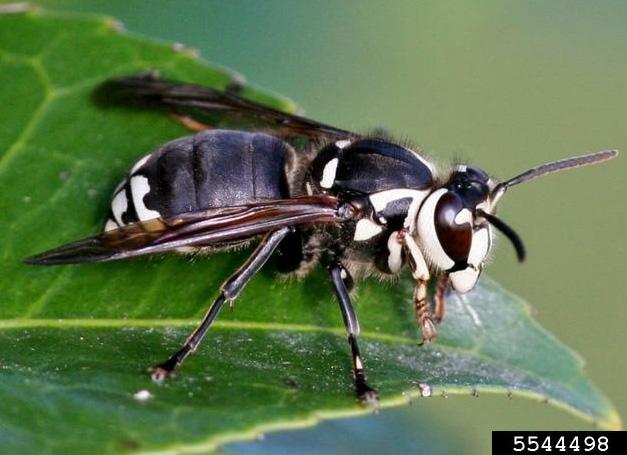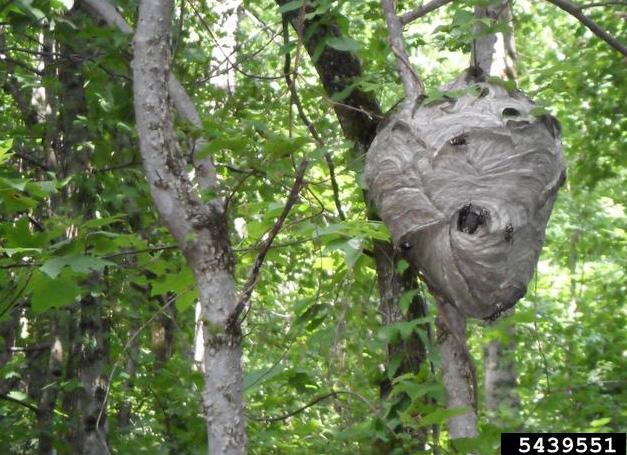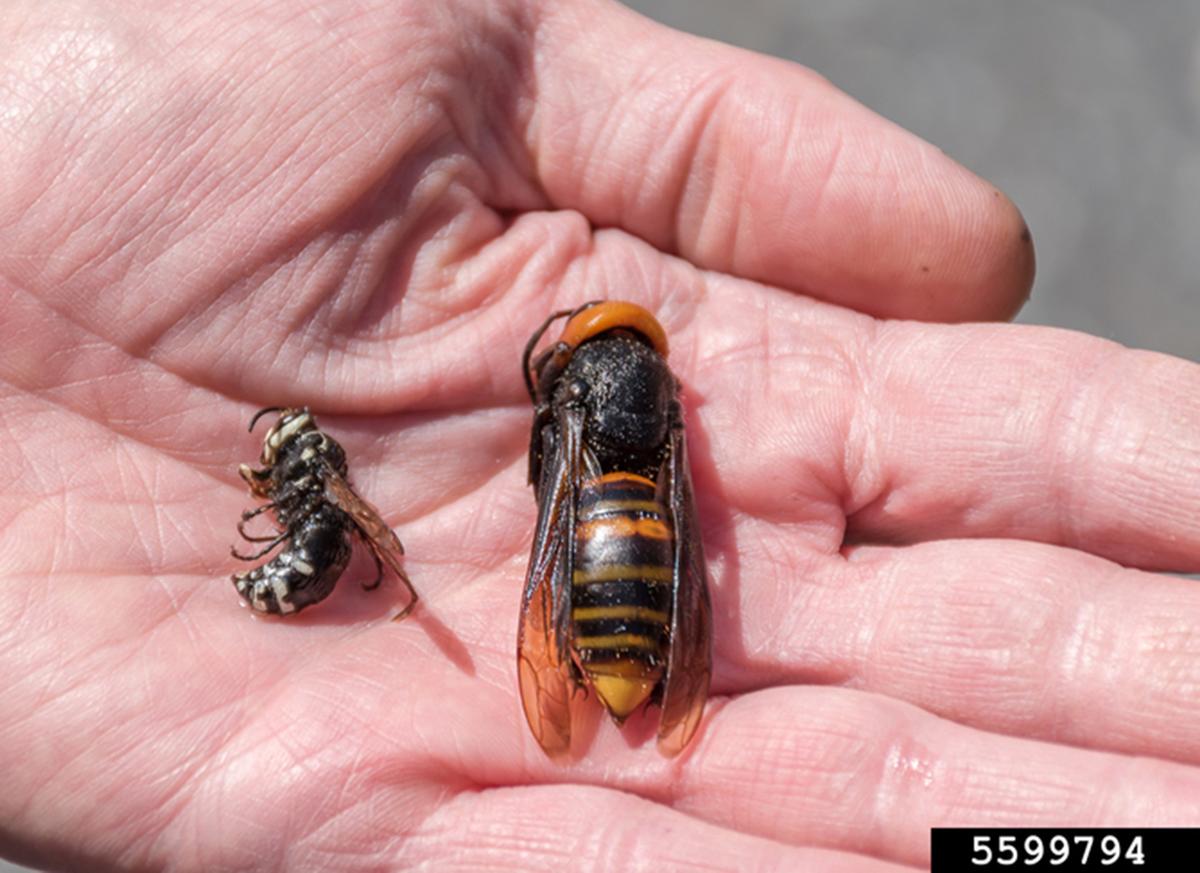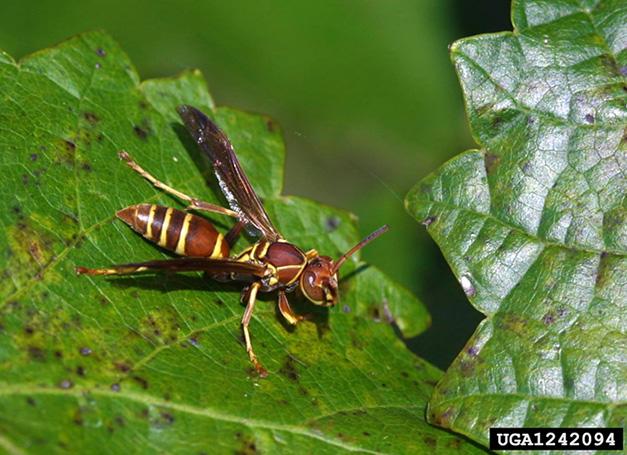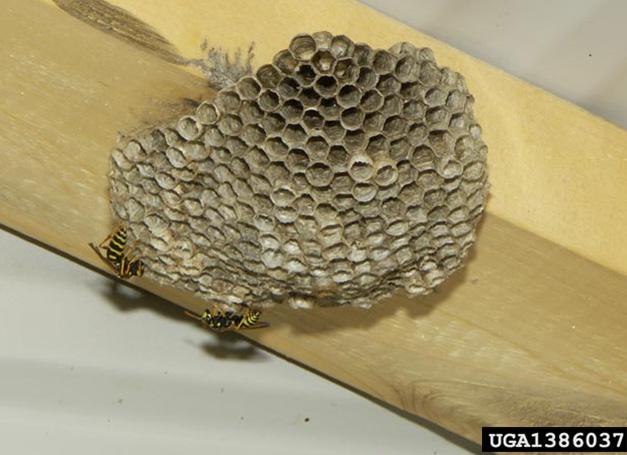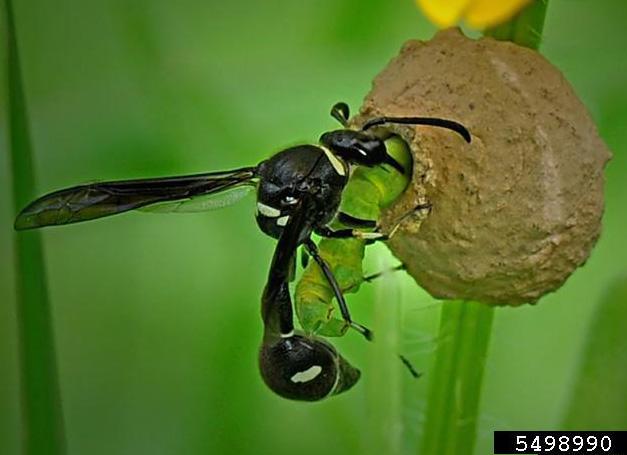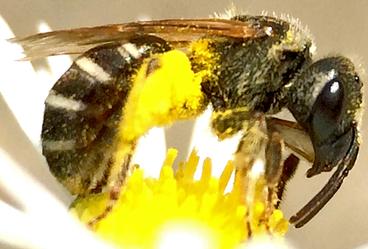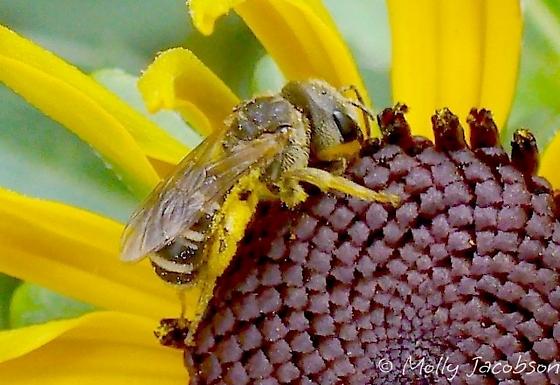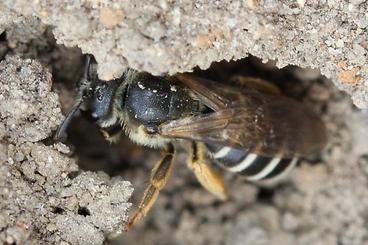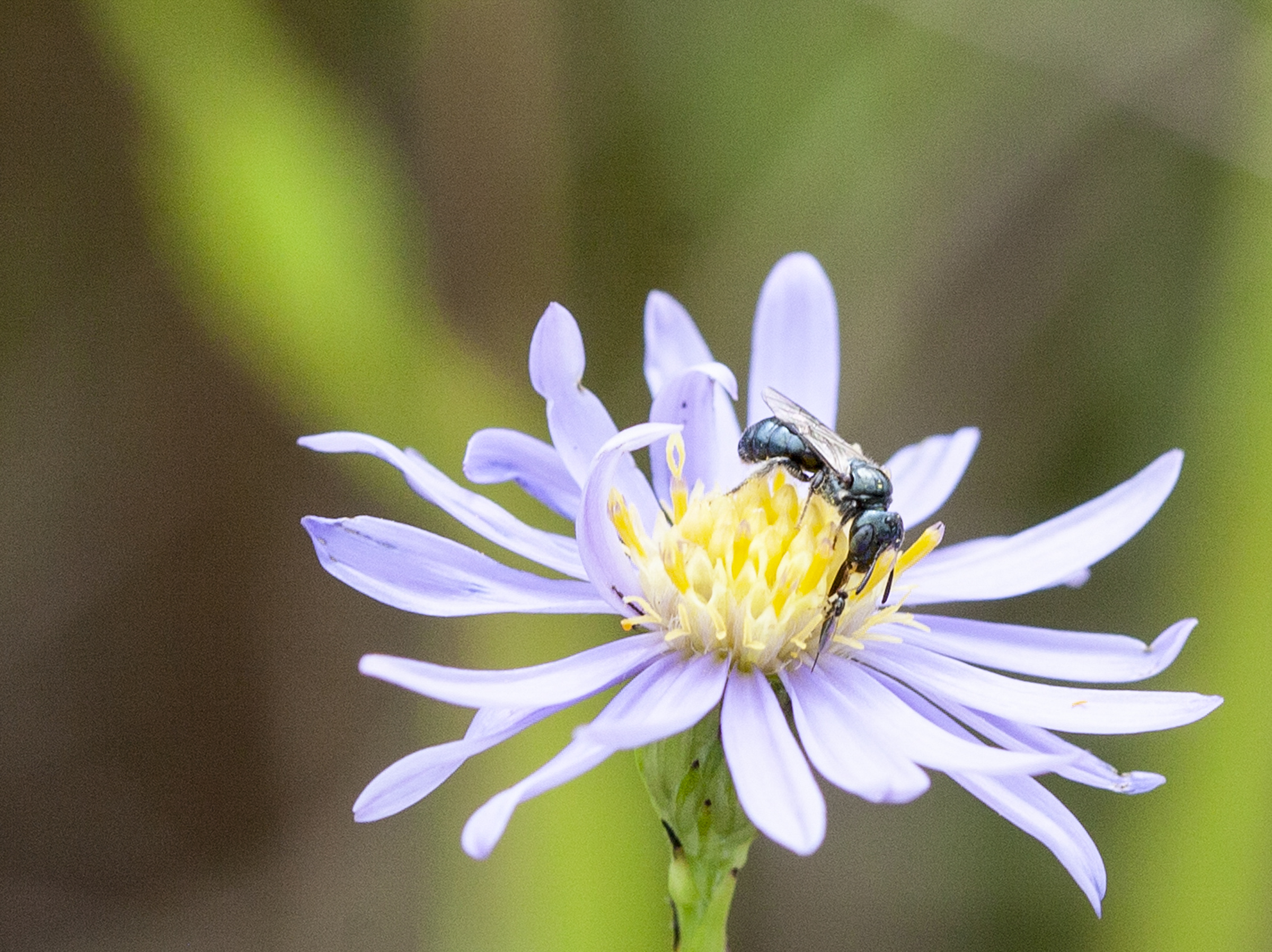Reviewed by Heather Holm, 12/2021
Heather Holm has numerous award-winning publications involving pollinators.
Heather Holm is a biologist, pollinator conservationist, and award-winning author. In addition to assisting with native bee research projects, she informs and educates audiences nationwide, through her writing and many presentations, about the fascinating world of native pollinators and beneficial insects, and the native plant communities that support them. Her first book, Pollinators of Native Plants, was published in 2014, and her second book, Bees, published in 2017, has won six book awards including the 2018 American Horticultural Society Book Award. Her latest book, Wasps, was published in February 2021. Heather’s expertise includes the interactions between native pollinators and native plants, and the natural history and biology of native bees and predatory wasps occurring in the Upper Midwest and Northeast.
Bees and wasps can either be social or solitary. Social bees and wasps have a division of labor (queen, worker, drone) and oftentimes resulting in a large colony in the nest. It’s important to note that most bees, social or solitary, are not aggressive. Bumble bees, for example, are social, yet docile. However, we can safely say that the majority of social wasp species we encounter can be aggressive (i.e., yellowjackets, bald-faced hornets). Continue reading to learn how to identify bees and wasps.
1. Family Colletidae (common name: cellophane or polyester bee)
Colletes spp. Black and white banding on abdomen Size: Small - medium, 7- 15 mm (0.3 - 0.6 in) Head: Hairy head and thorax, heart shaped face (strongly converging eyes) Tongue: Short, 1 - 3 mm (0.4 - 0.12 in), two lobed Flight distance: 150 m (500 ft) Nest: Ground, often near water, dense aggregations in sandy, loamy soil, loam, clay loam with nest lining of Dufour's gland secretion of cellophane, brushed on with glossa Pollen collection: Scopae, upper hind legs and thorax
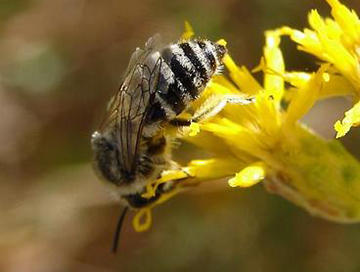
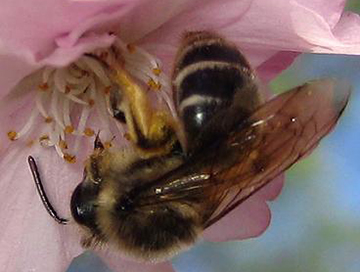
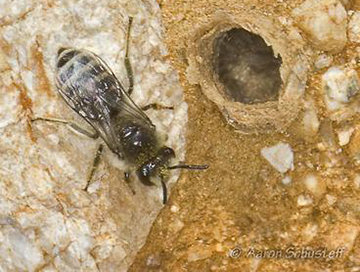
2. Family Colletidae (common name: yellow-faced bee)
Hylaeus spp. Black with yellow markings Size: Small, 5 - 7 mm (0.2 – 0.3 in) Tongue: Short, 1 - 2 mm (0.04 - 0.07 in) hairless, bi-lobed Nest: Preexisting cavities: stems or twigs with cellophane-like material, brushed on with glossa Pollen collection: Crop, no pollen-collecting scopae
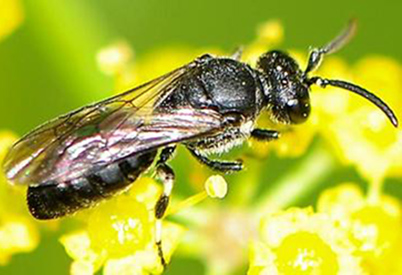
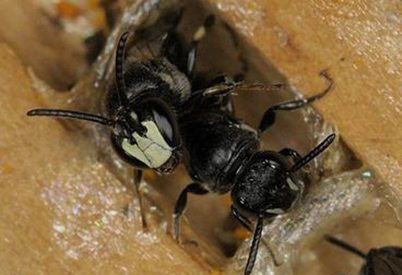
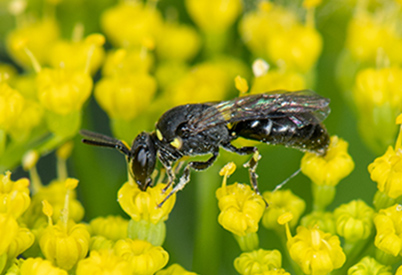
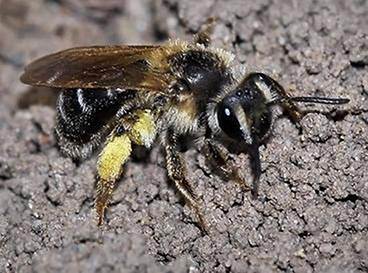
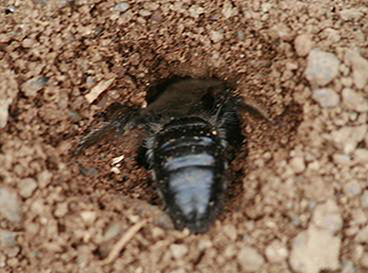
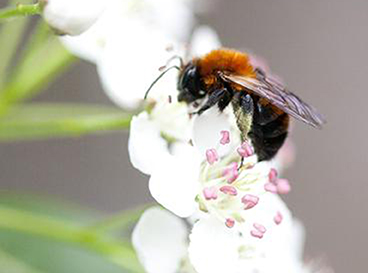
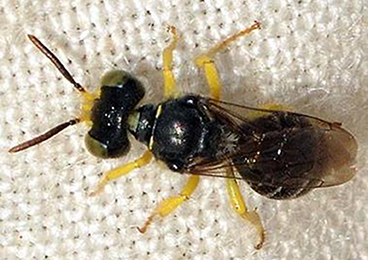
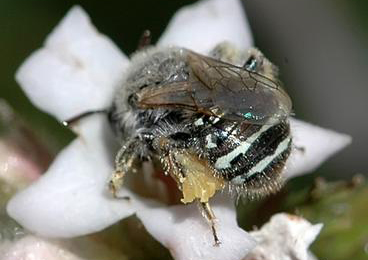
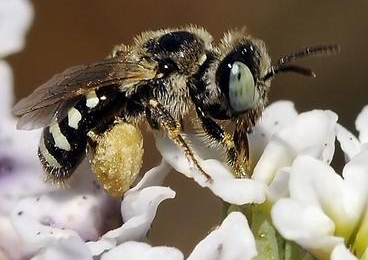
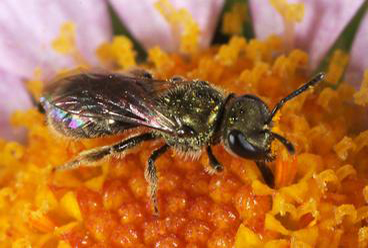
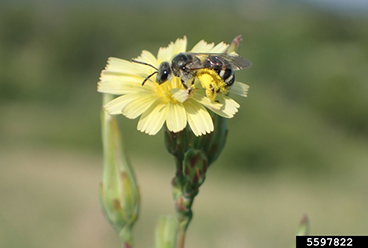
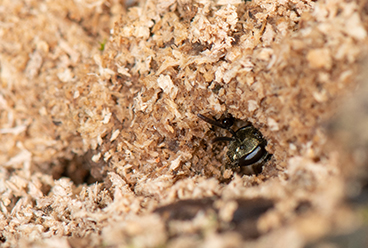
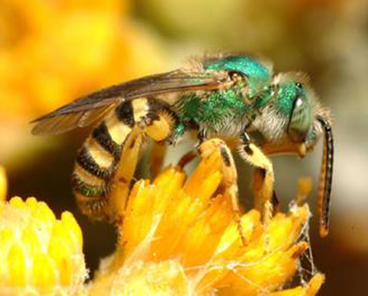
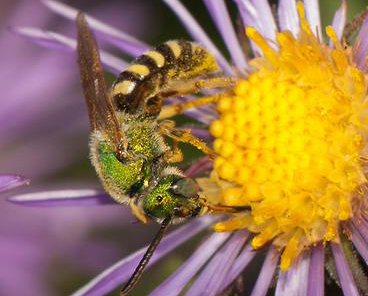

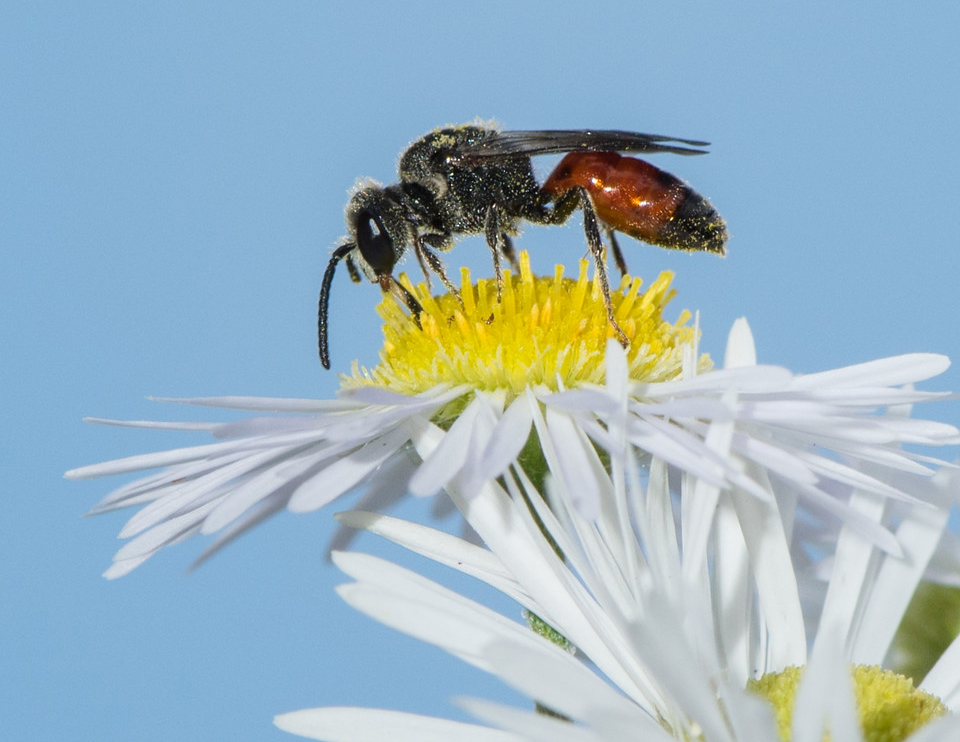
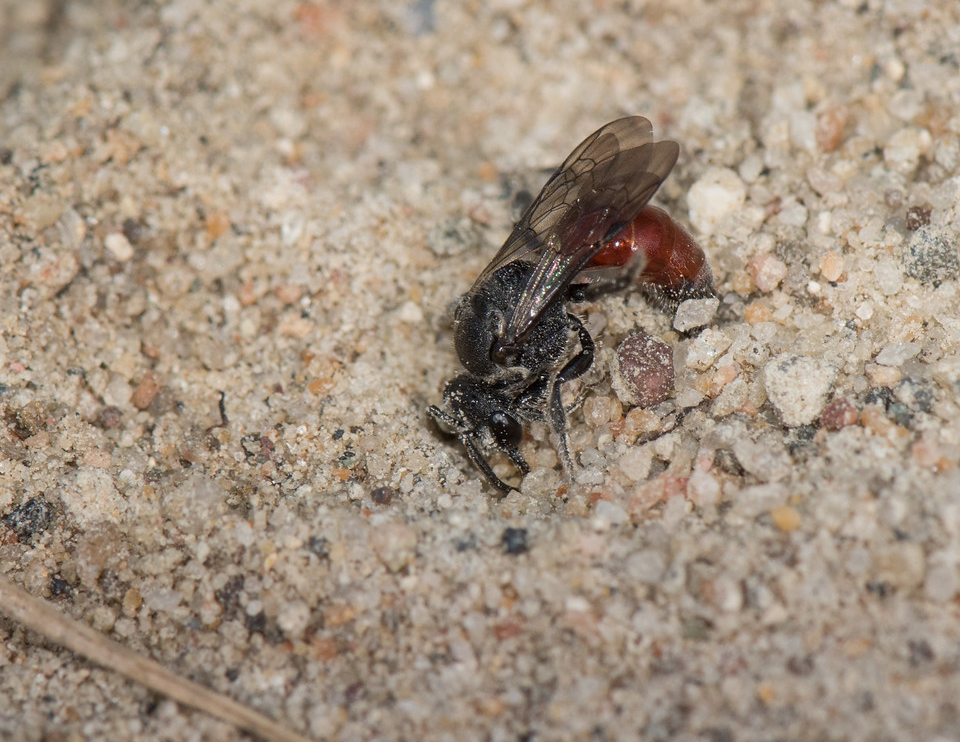
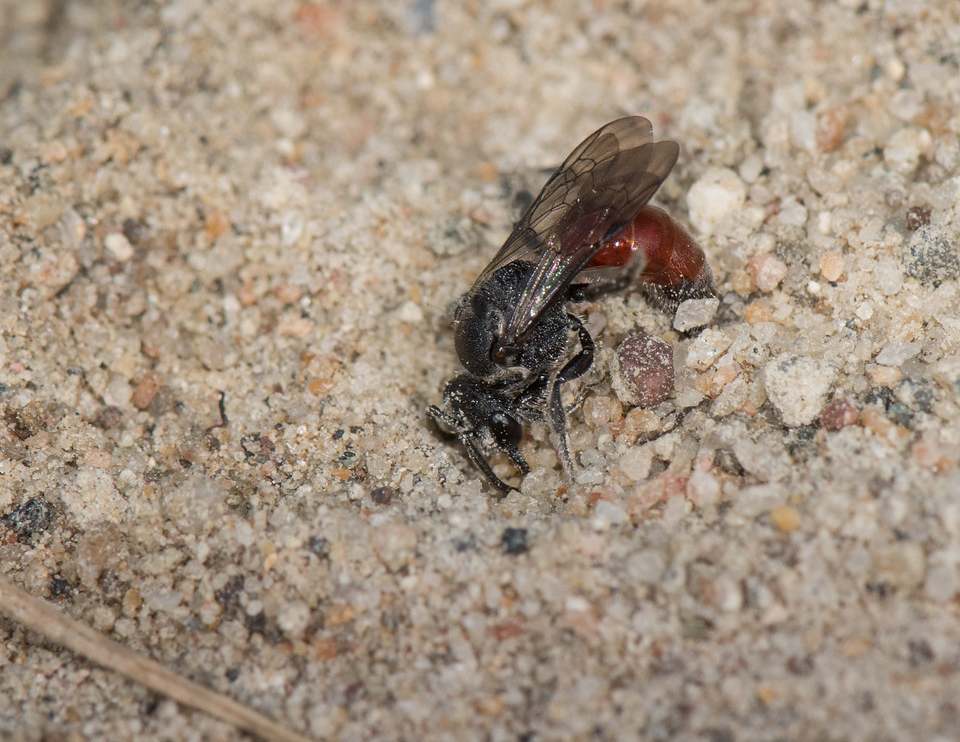
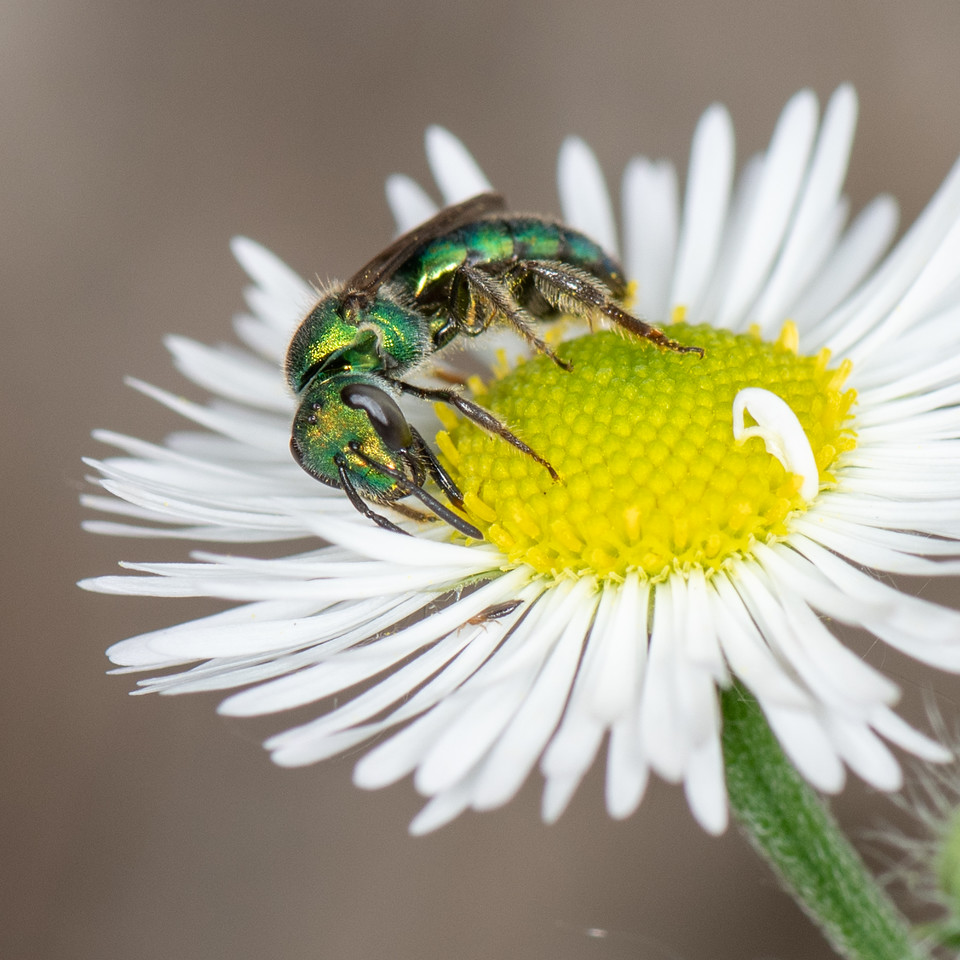
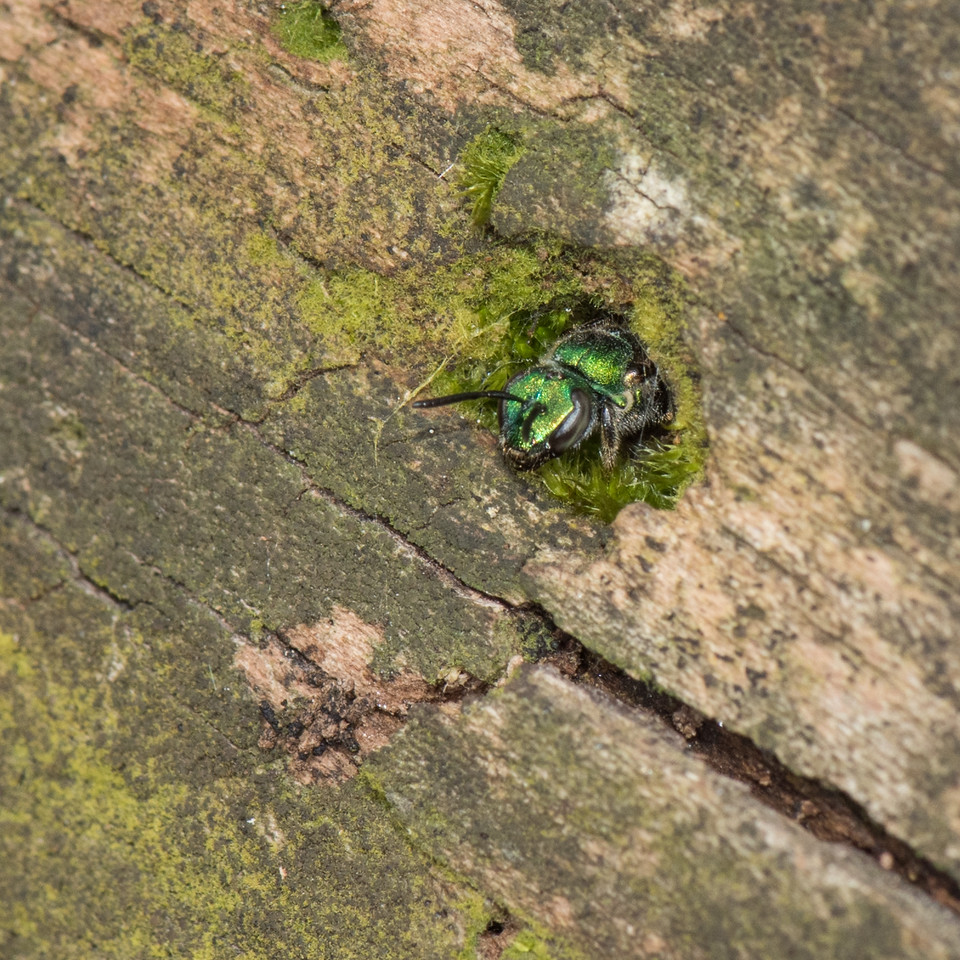

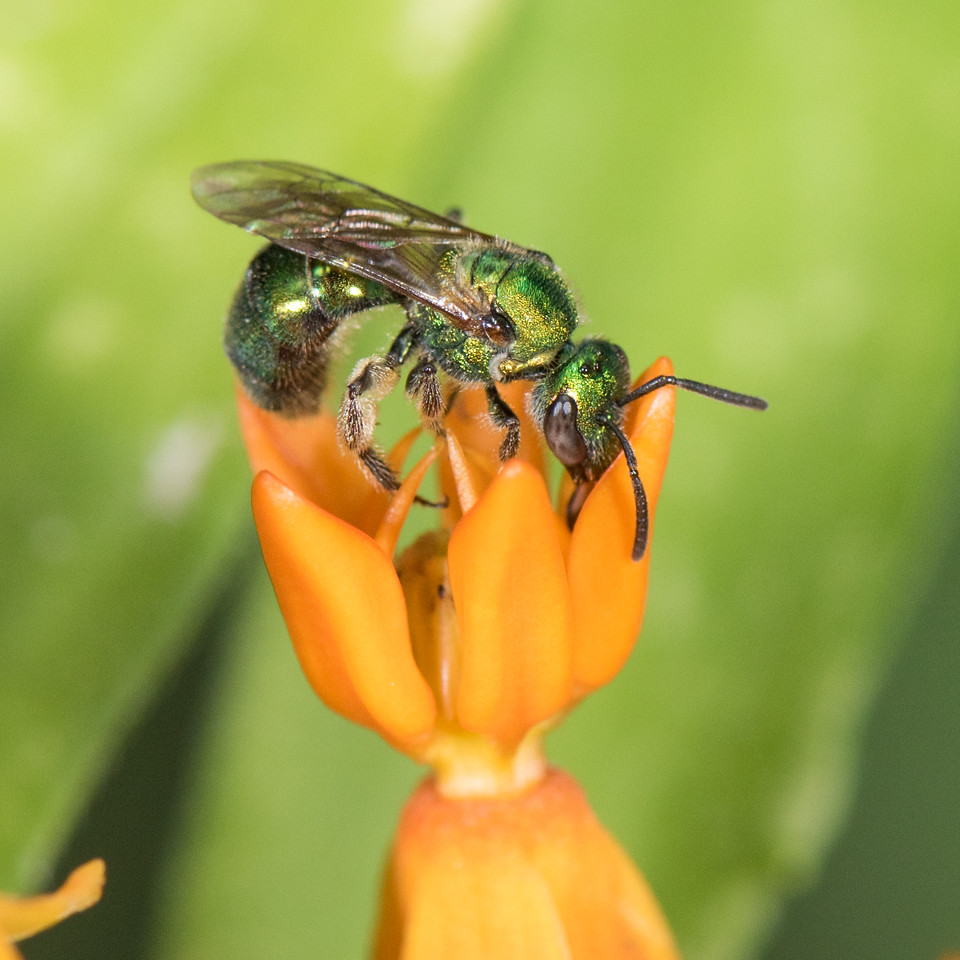
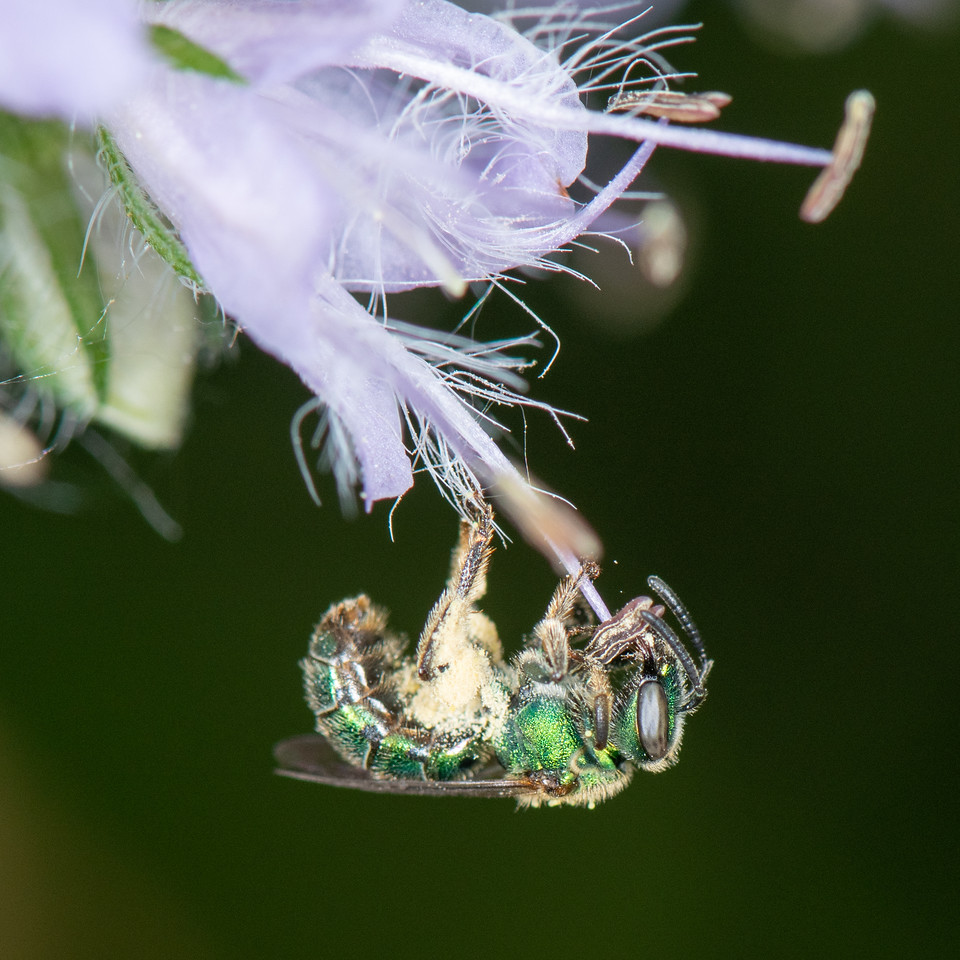
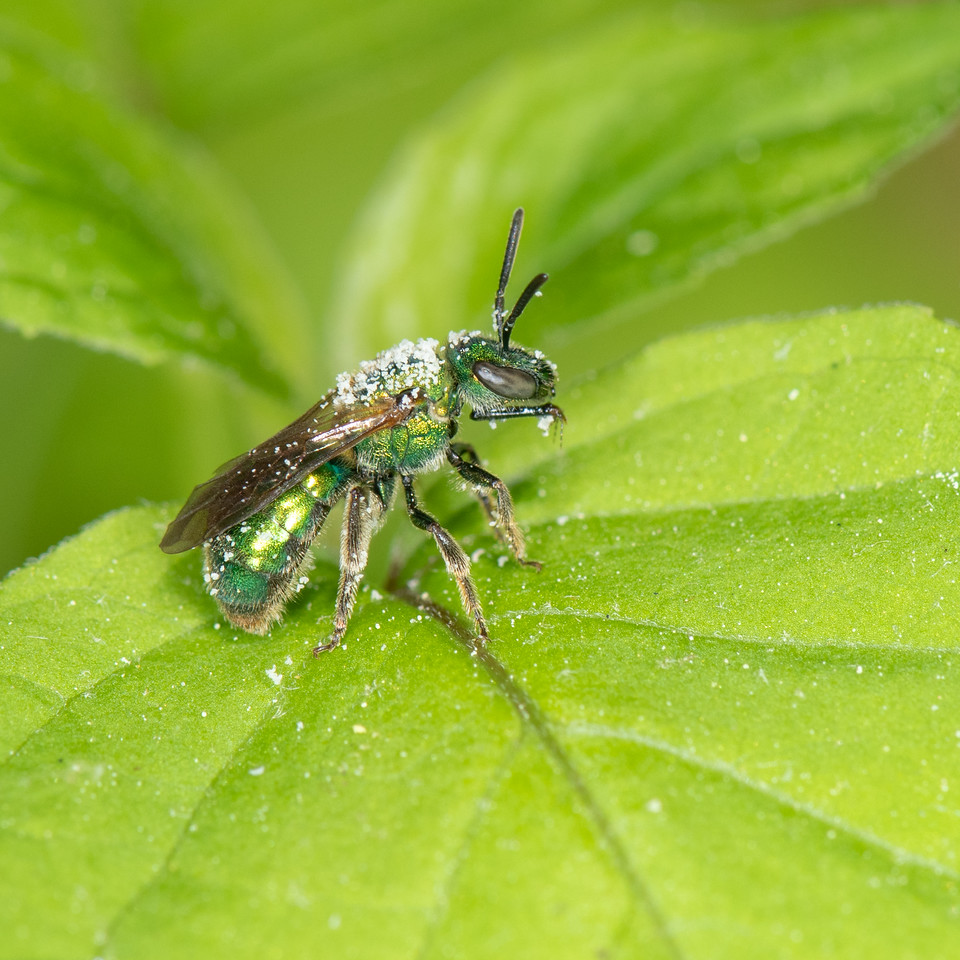
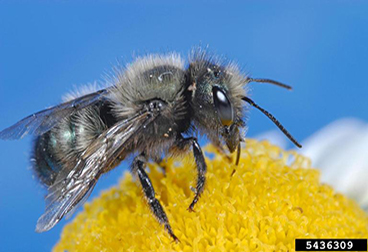
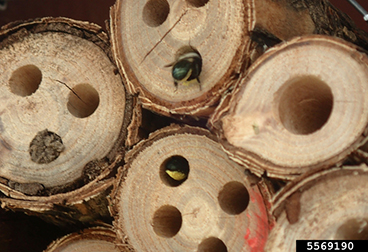
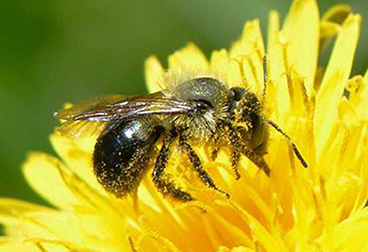
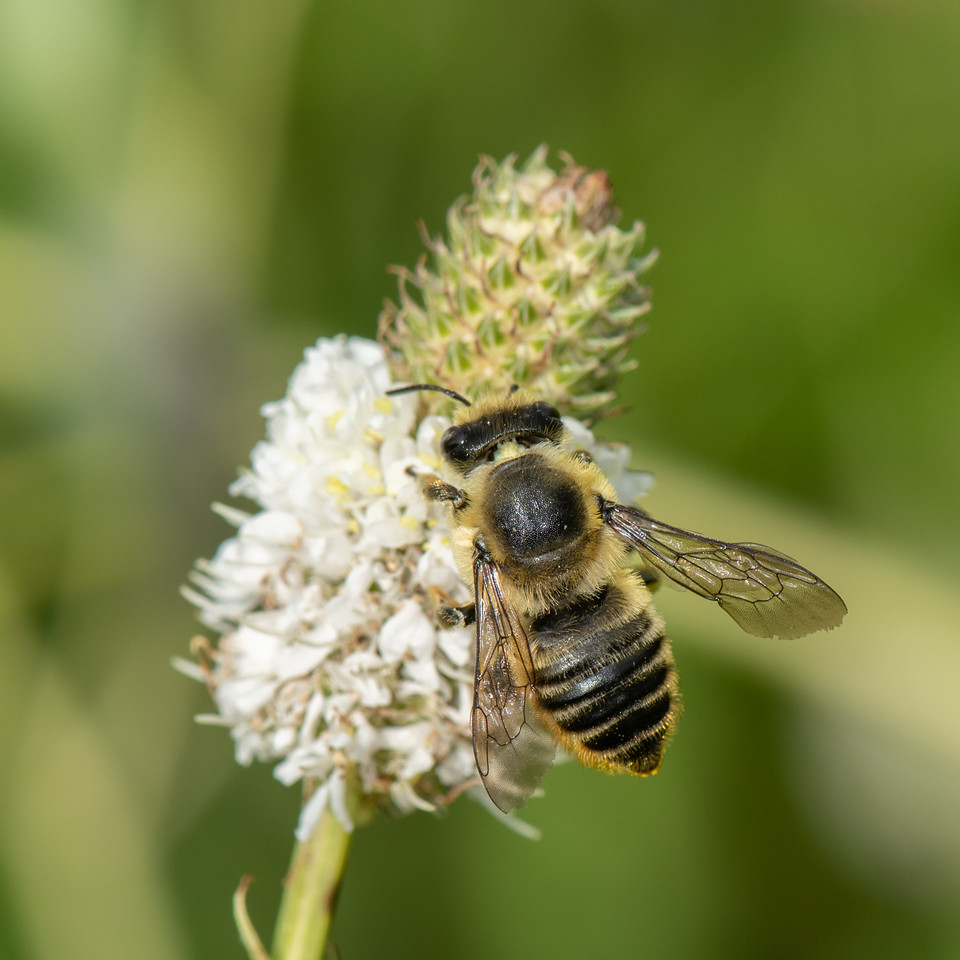
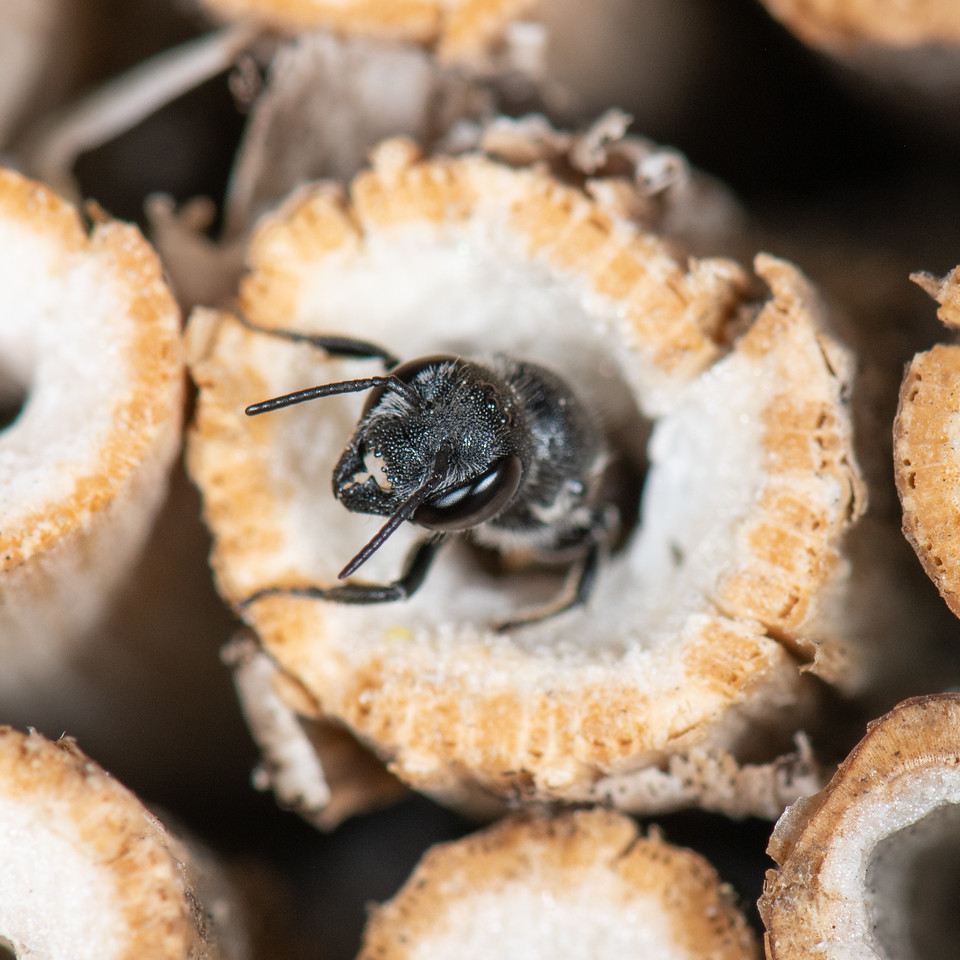
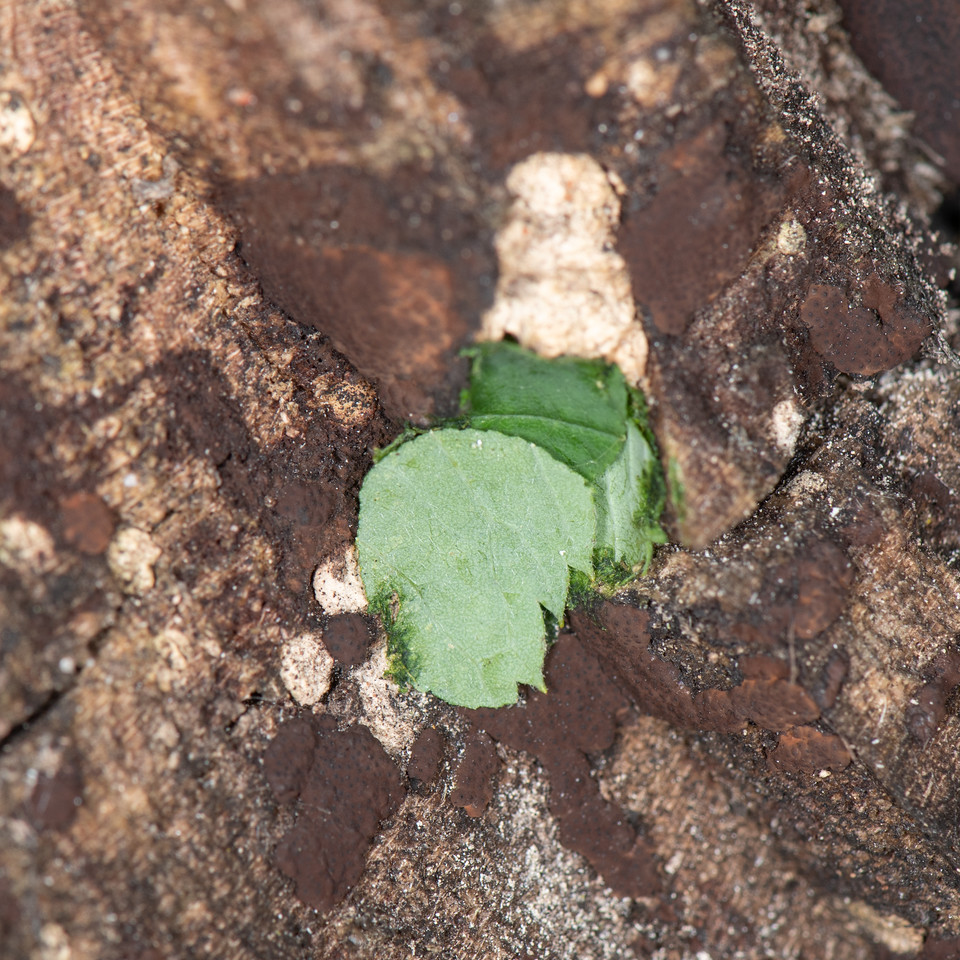
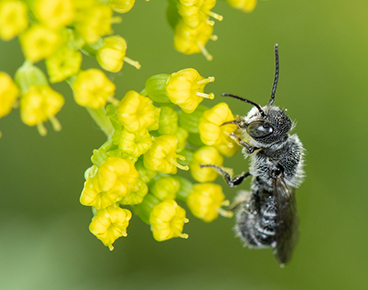
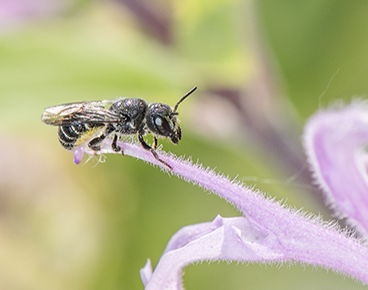
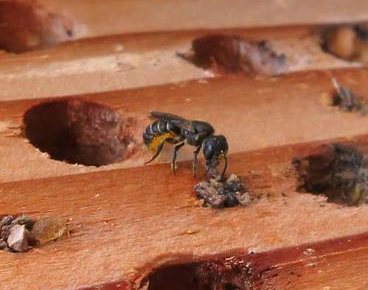
14. Family Megachilidae (common name: mason bee)
Hoplitis spp. Black or metallic (western species), slender, robust, hairy face Size: Small to medium 5 - 15 mm (0. - 0.6 in) Nest: Preexisting cavities (pithy stems, wood, old nests in soil or mud nests with nest) Pollen collection: Abdominal scopae
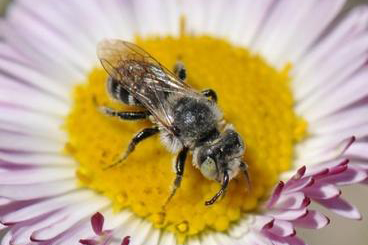
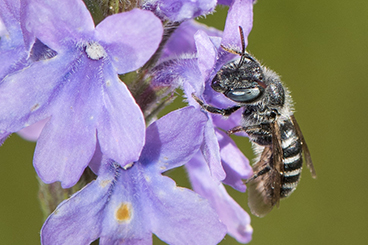
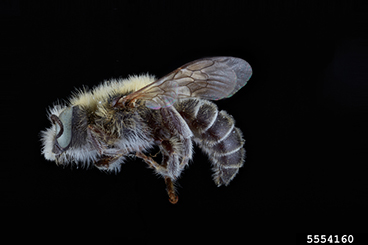
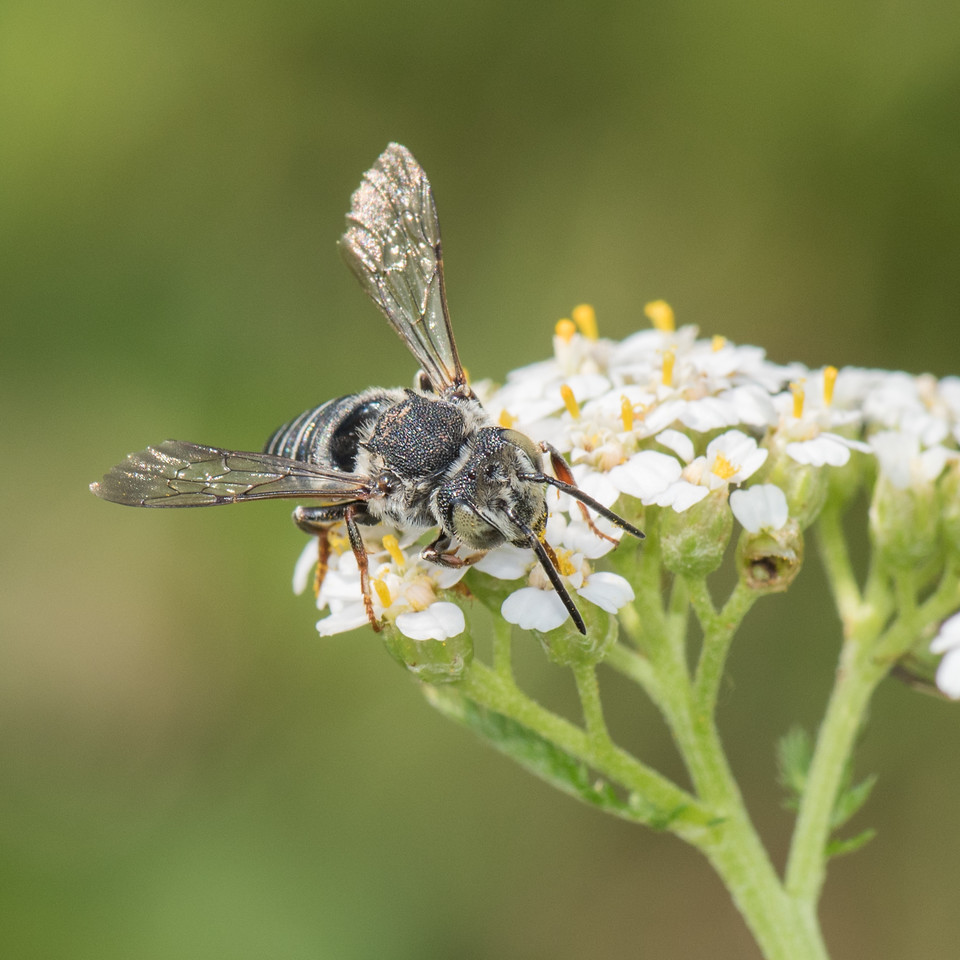
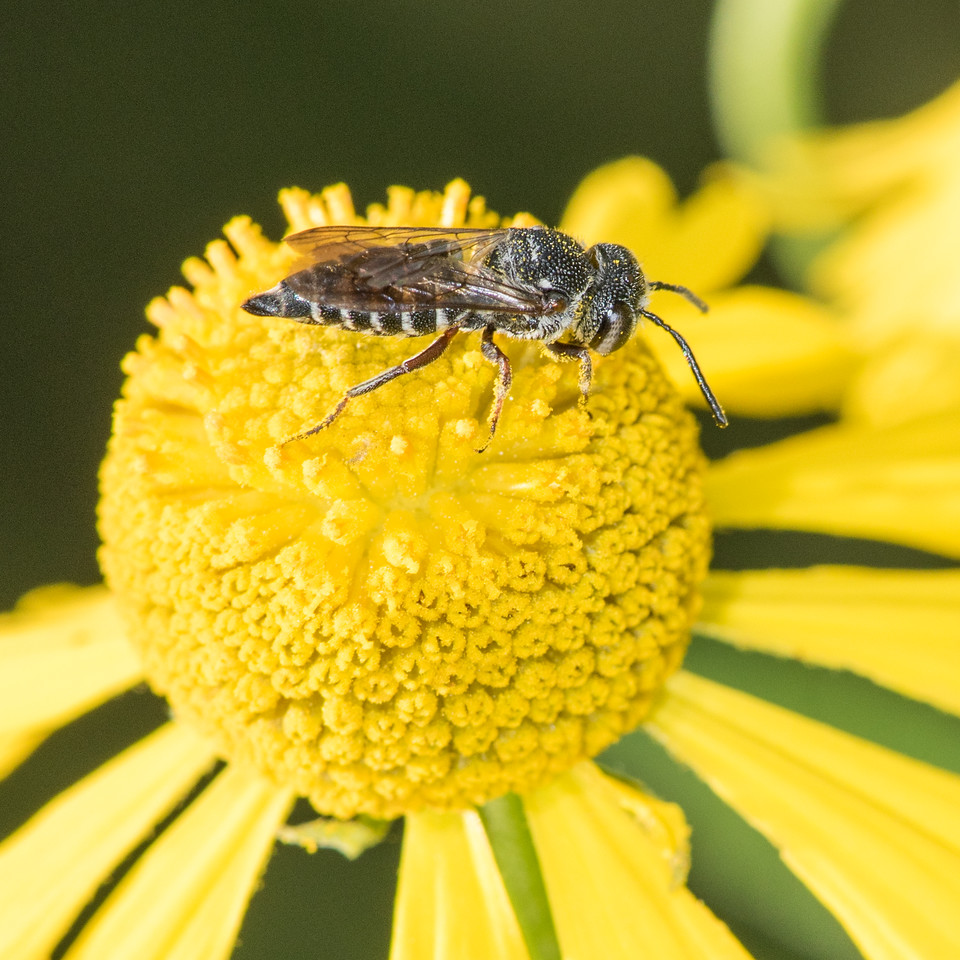
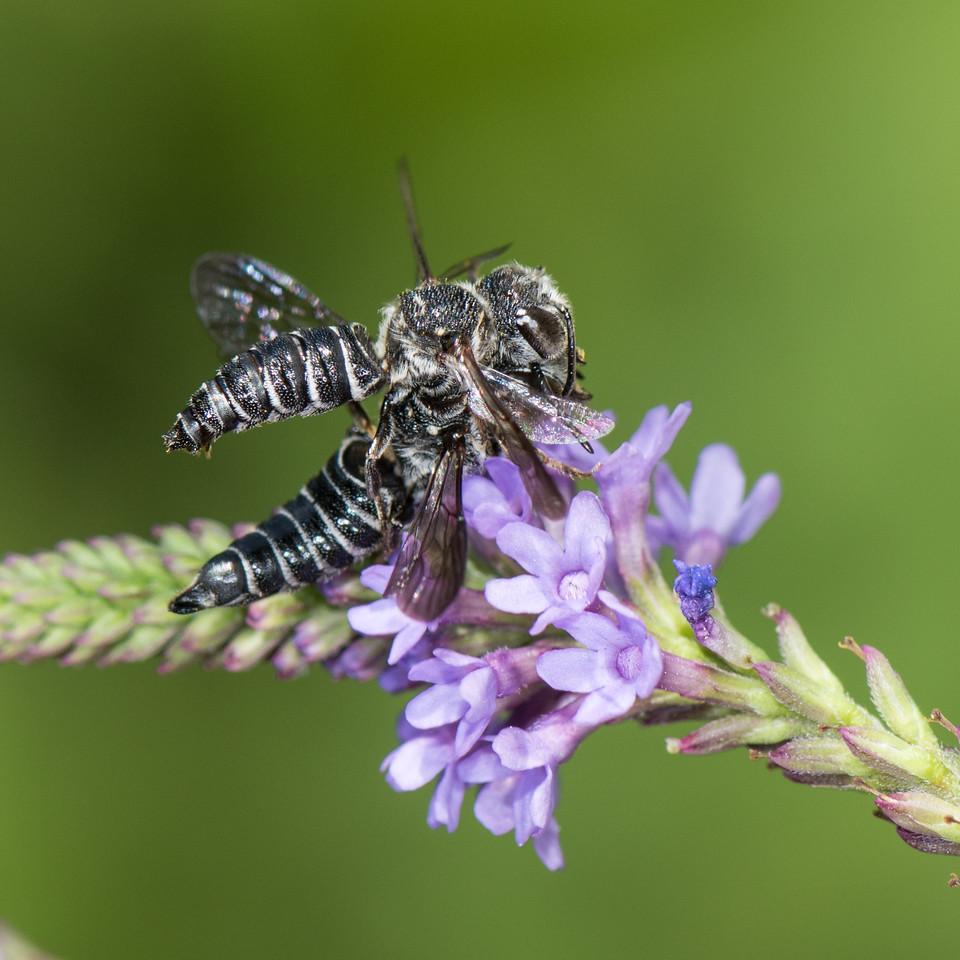
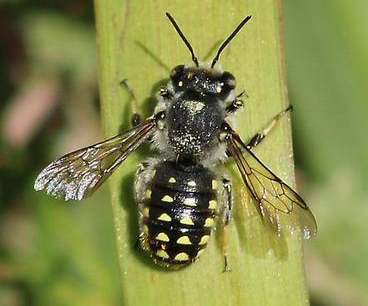
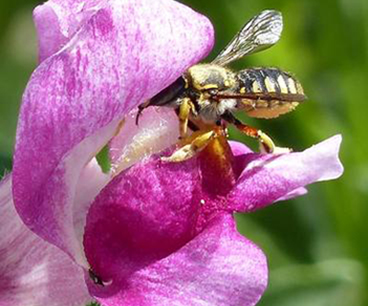
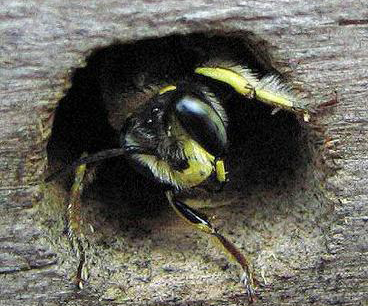
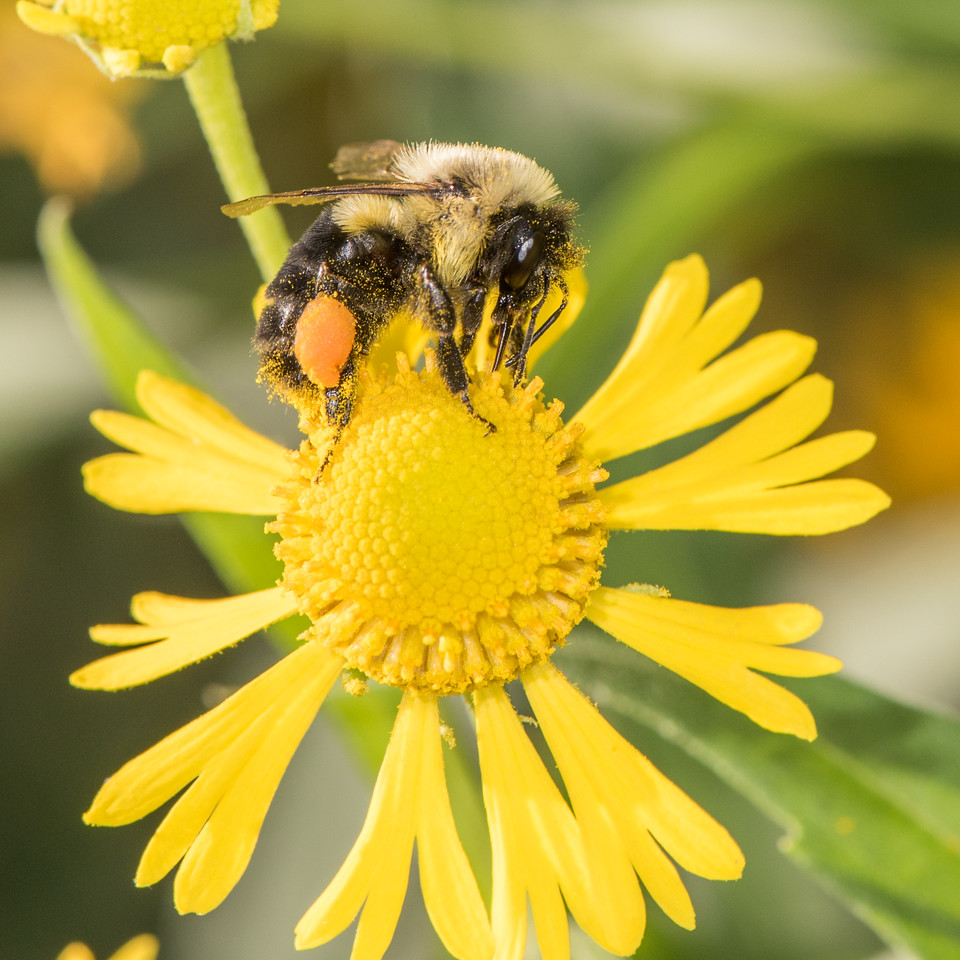
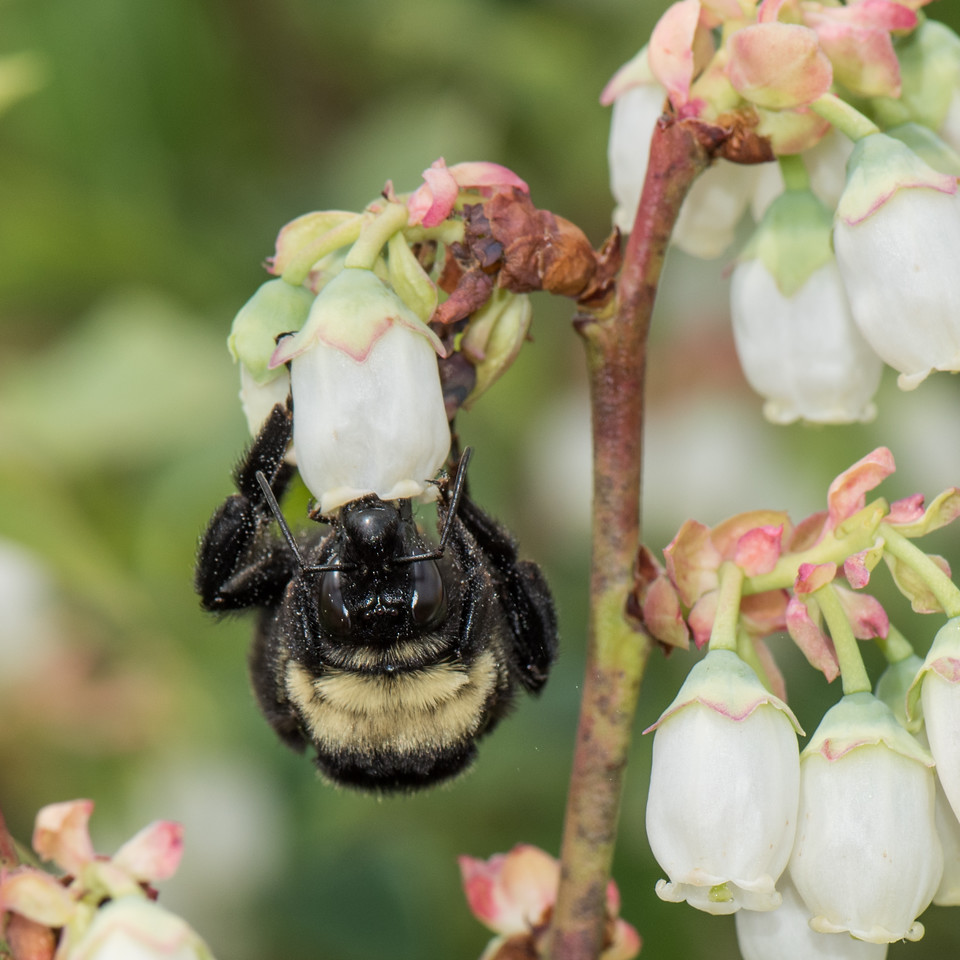
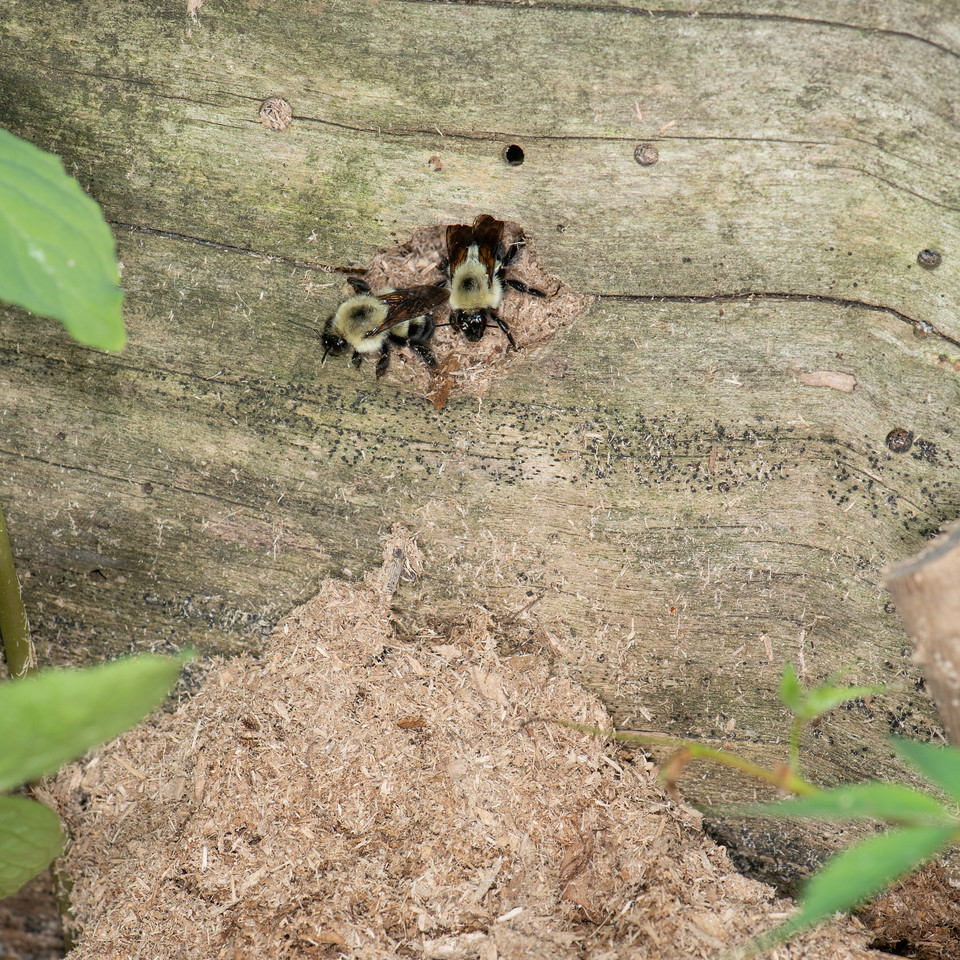
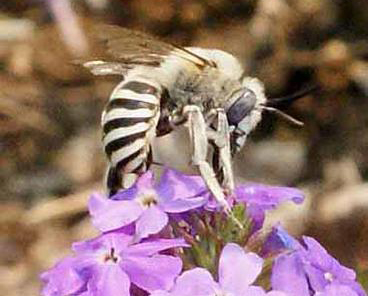
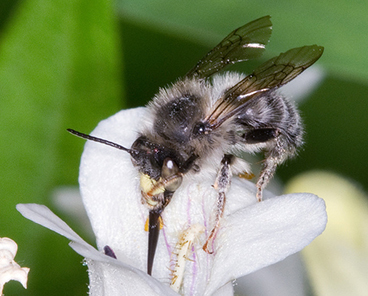
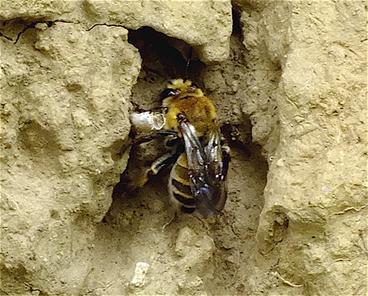
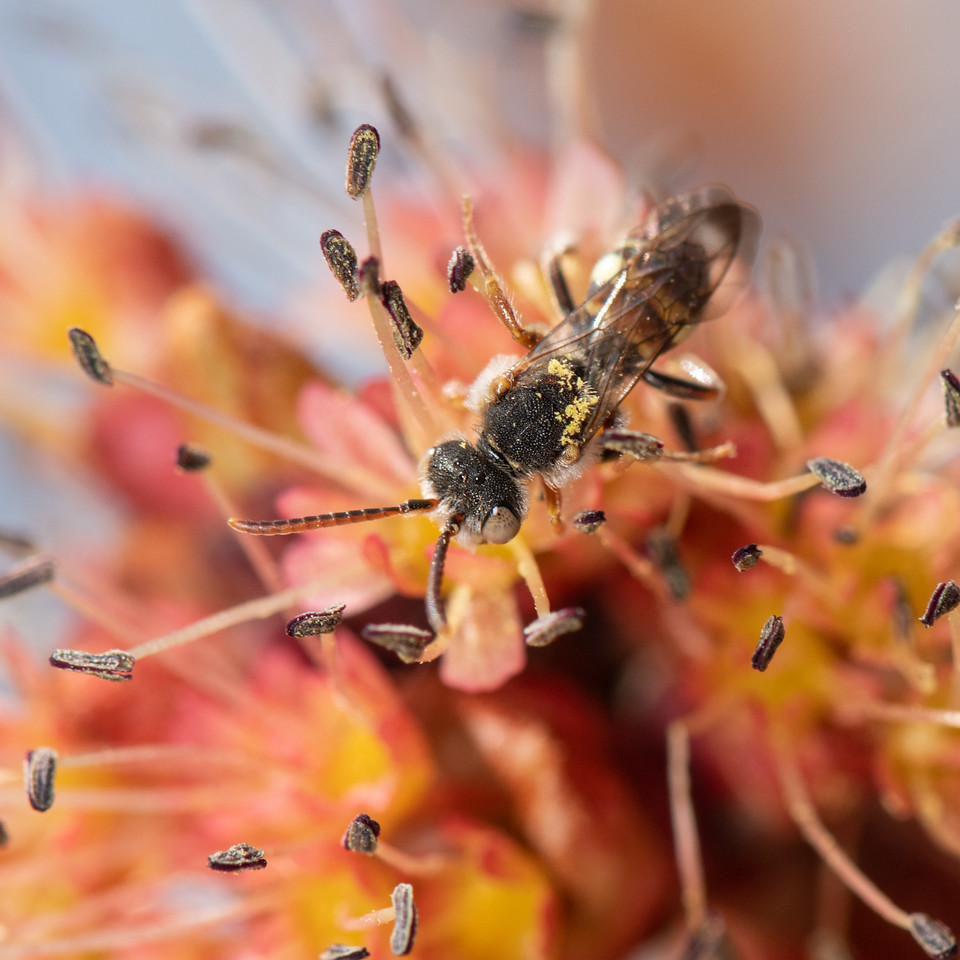
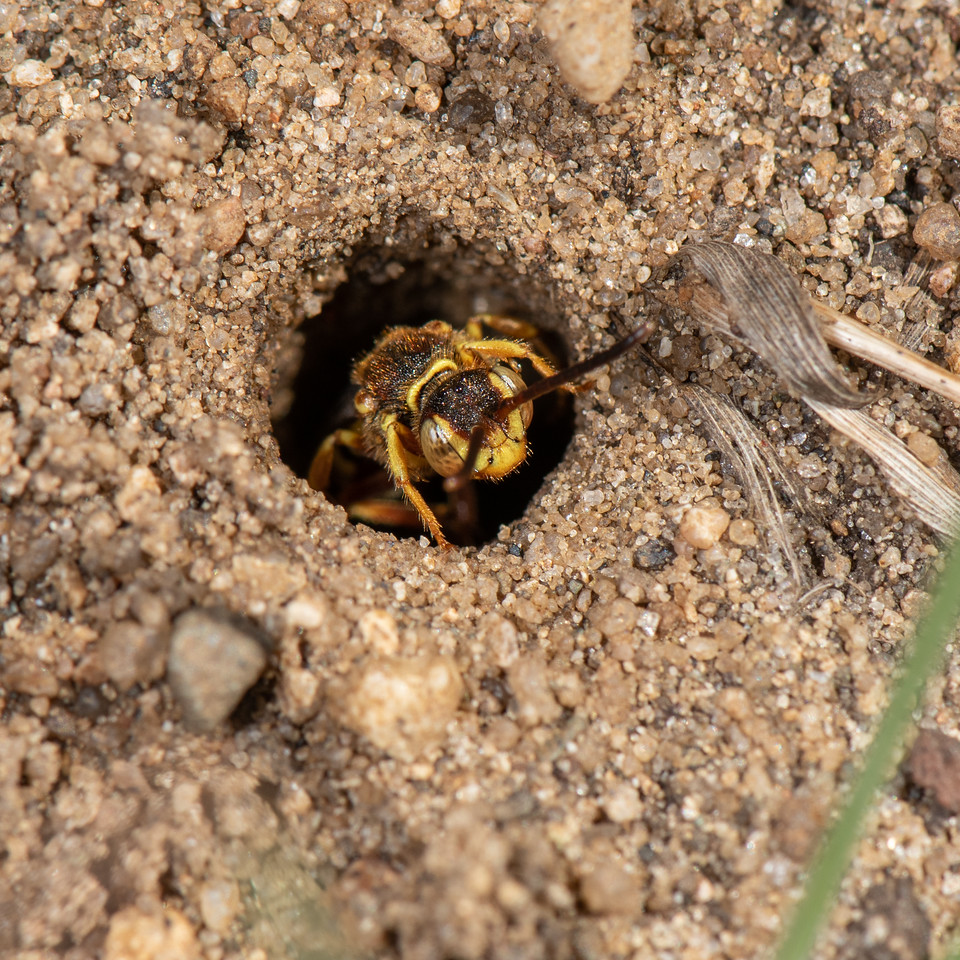
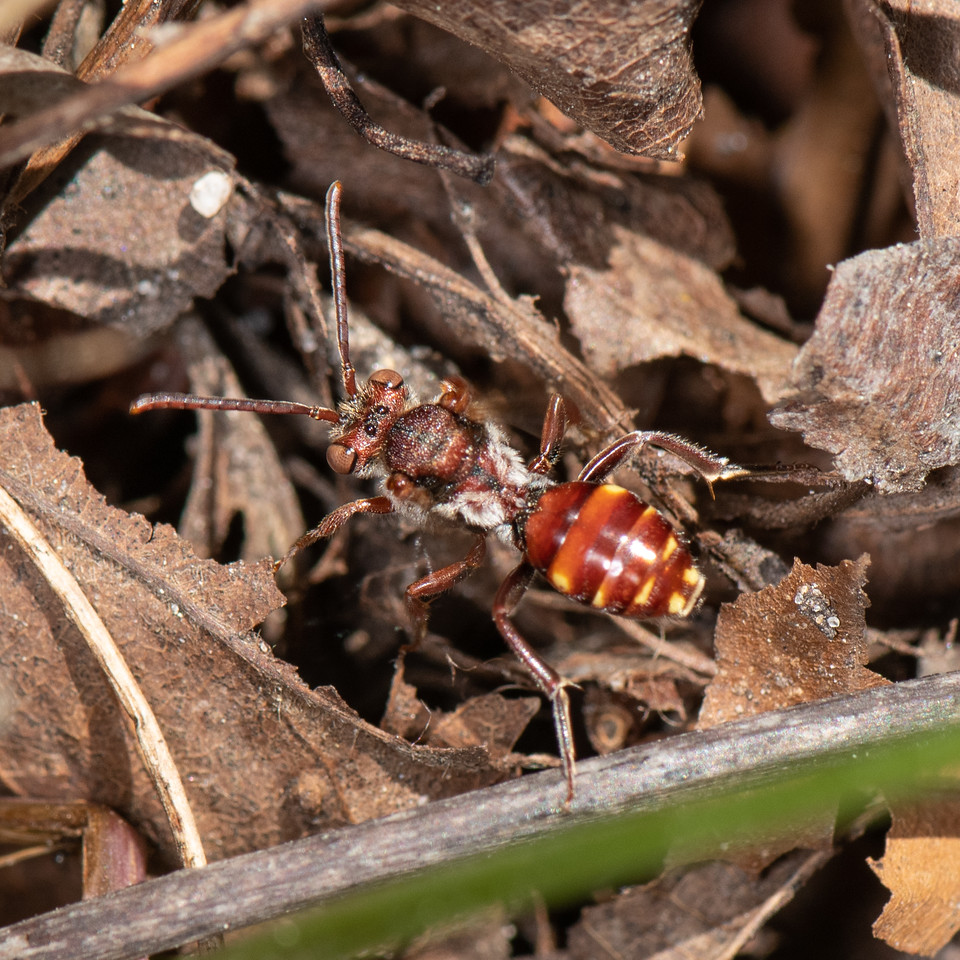
20. Family Apidae (common name: cuckoo bee)
Triepeolus spp. Black with yellow or white markings, very short hair, appearing hairless Size: Medium, 3 - 15 mm (0.1 - 0.2 in) Tongue: Medium, 4 - 5 mm (0.1 – 0.2 in) Nest: Cleptoparasite of digger bees and Andrenids (lays eggs in other bees' nests) Pollen Collection: None
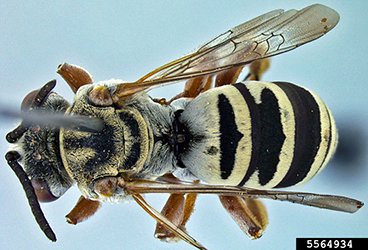
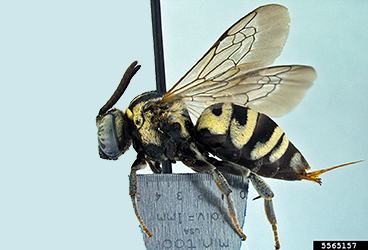
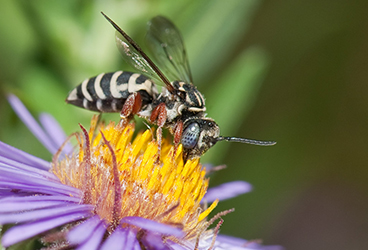
21. Family Apidae (common name: small carpenter bee)
Ceratina spp. Blue, black, green, metallic with cylindrical abdomen, sparsely haired, shiny, often white (or yellow) patch on face Size: Small - medium, 3 - 15 mm (0.1 - 0.6 in) Tongue: Medium, 5 - 9 mm (0.2 - 0.35 in) Nest: Pithy stems, wood in vertical or angled nest orientation with nest divisions of pith and saliva Flight Distance 180 m (200 yd) Pollen Collection: Scopae hind legs
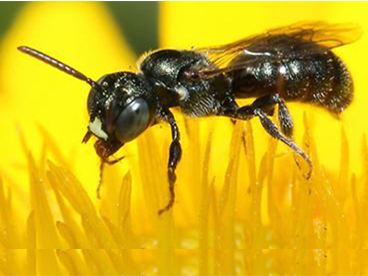
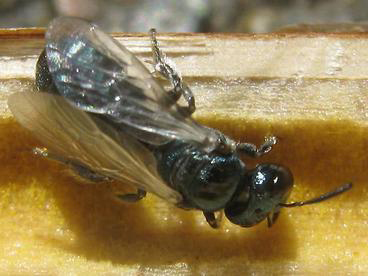
22. Family Apidae (common name: long-horned bee)
Melissodes spp. Robust and hairy, often bands on abdomen in the middle of the abdominal segments Size: Small - medium, 7 - 18 mm (0.3 - 0.7 in) Males: long antennae Tongue: Medium - long Nest: Ground nest with lining of wax-like substance Pollen Collection: long scopae on hind legs
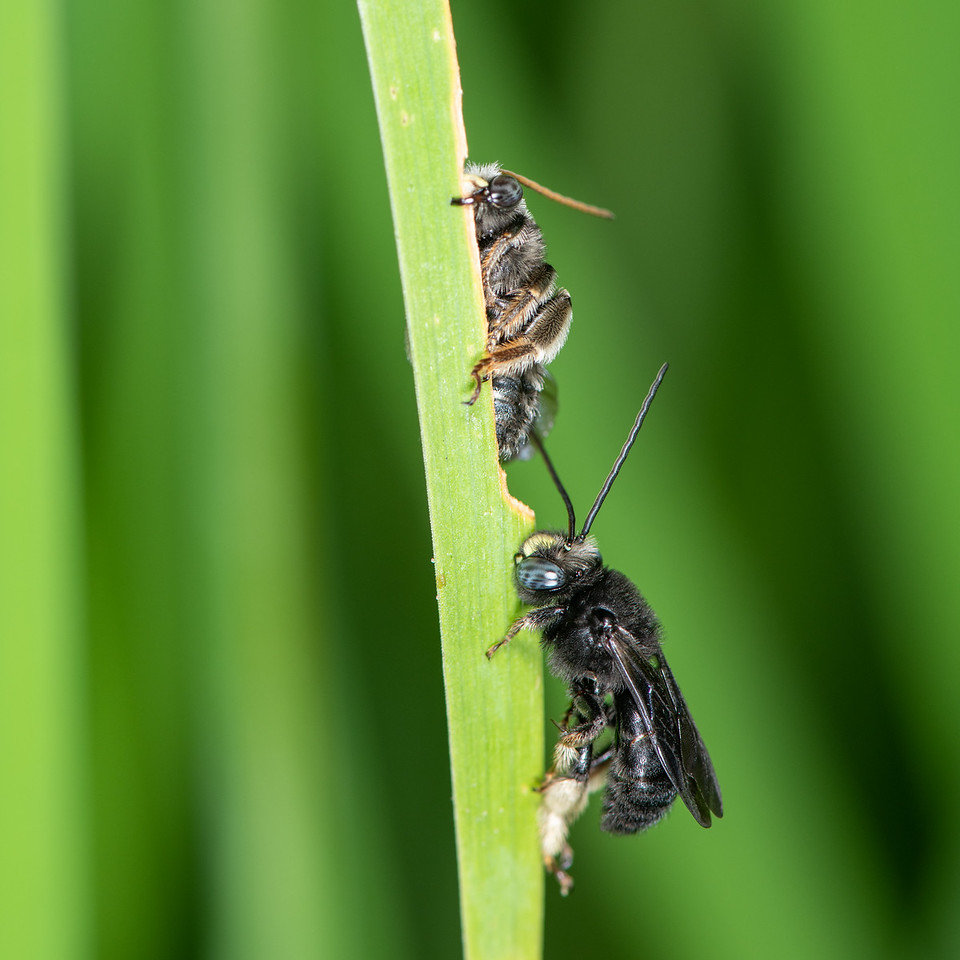
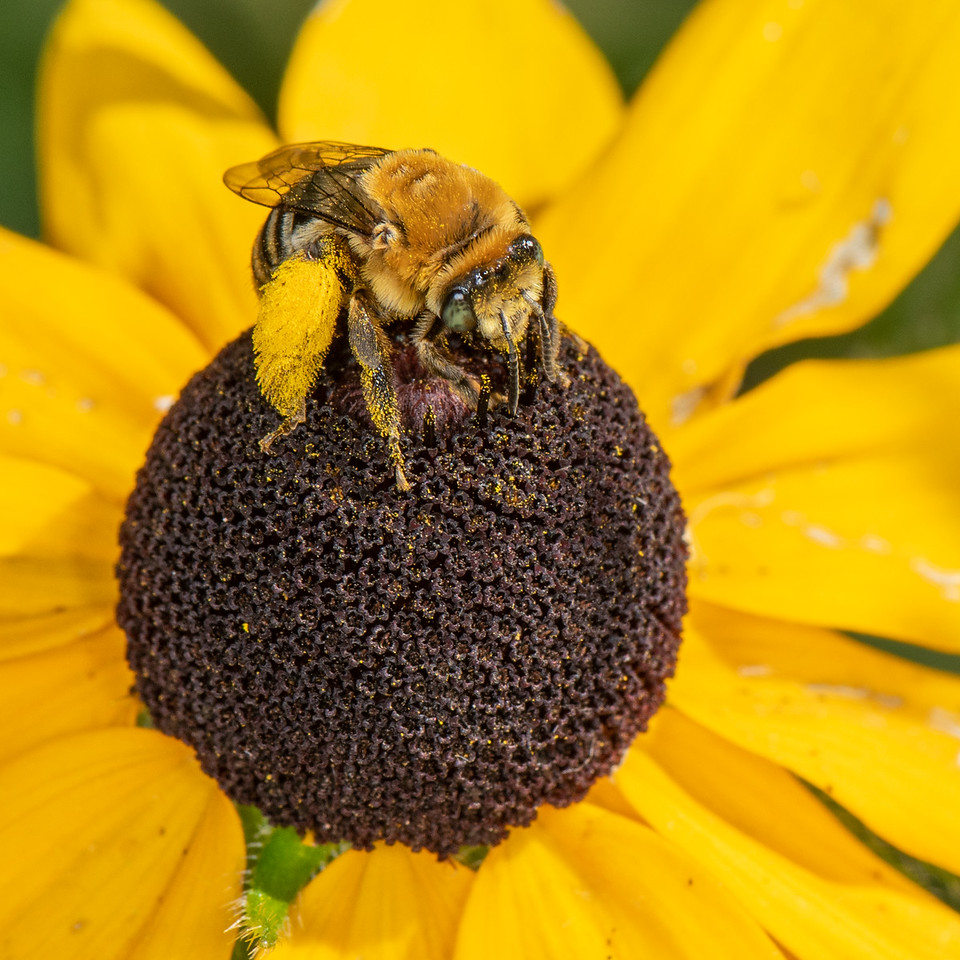
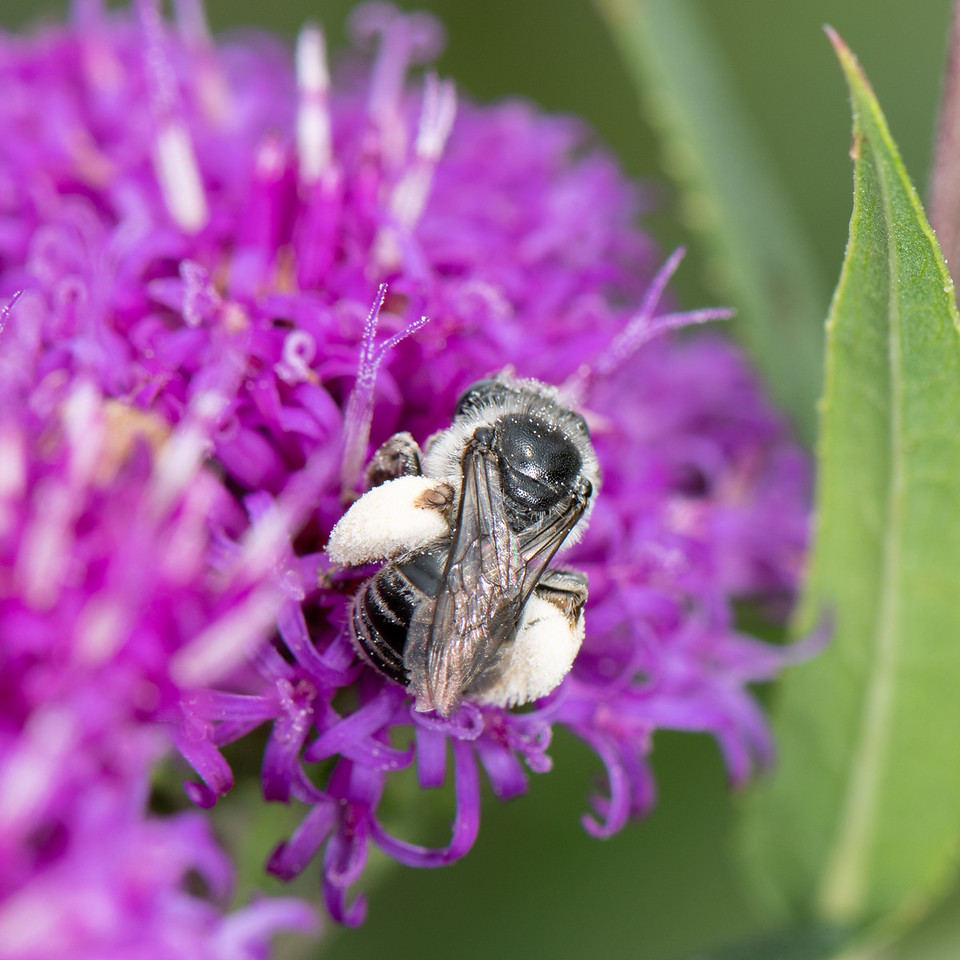
23. Family Apidae (common name: large carpenter bee)
Xylocopa spp. Black with yellow hairs, bumble bee-like with robust, hairy thorax, shiny black abdomen Size: Large 13 - 30 mm (0.5 - 1.25 in) Tongue: Medium - long Nest: Excavated with mandibles in wood and plant stems and nest lining of sawdust (plant stems) Flight Distance: 1.6 km (1 mi) Pollen Collection: Scopae on hind legs
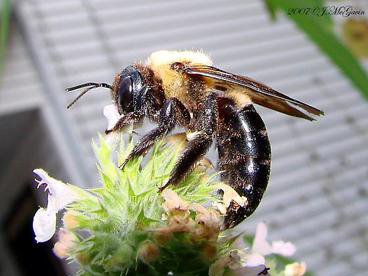
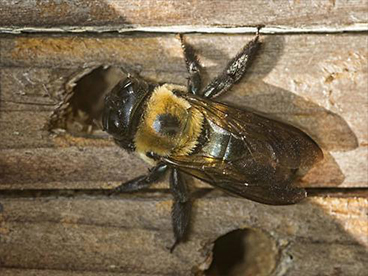
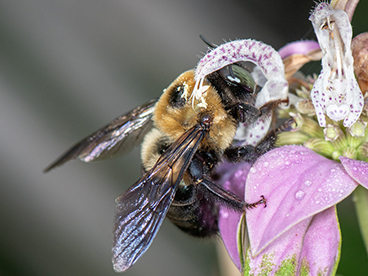
24. Family Apidae (common name: honey bee)
Apis mellifera Black with golden hairs and moderately hairy, long abdomen with black or gold stripes, hairy eyes Size: Medium, 10 - 15 mm (0.4 - 0.6 in) Tongue (worker): 5 - 8 mm (0.2 - 0.3 in) Nest: Social, colony mostly in man-made managed wood equipment; some feral hives in tree cavities Nest materials: Wax hexagonal cells Flight Distance 3.2 km (2 mi) Pollen Collection: Pollen baskets hind legs (corbiculae)
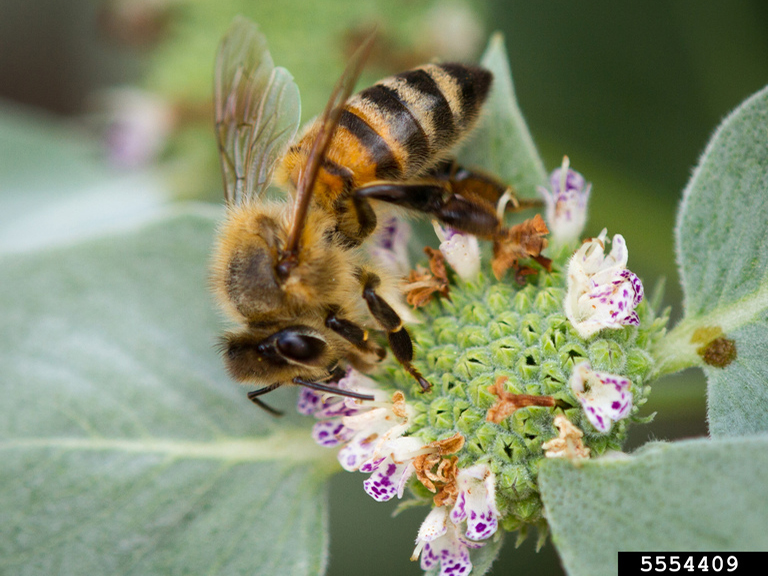
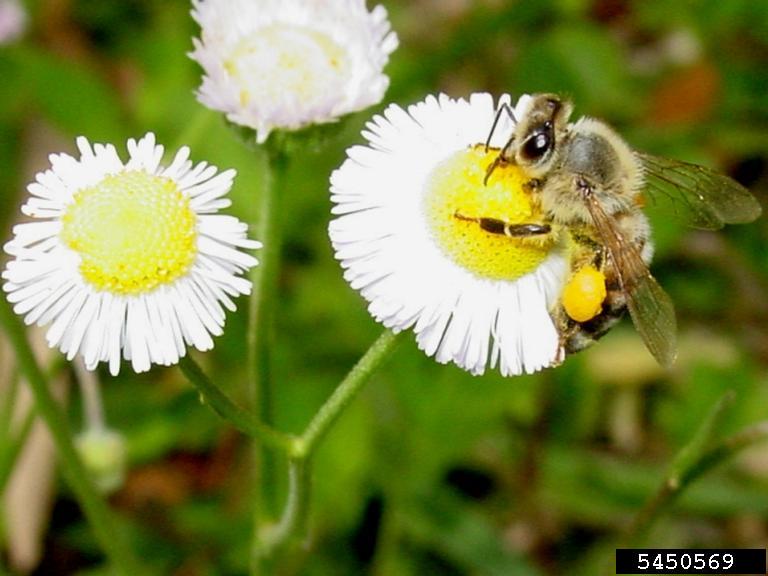
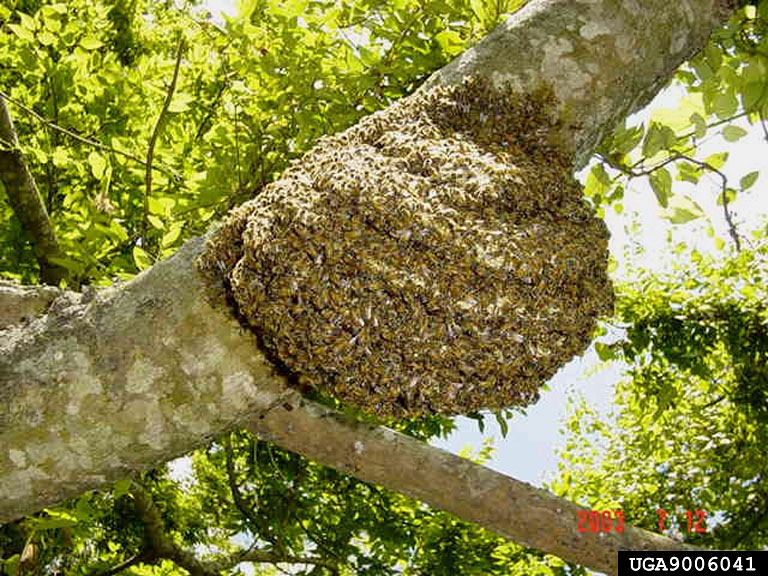
1. Family Braconidae
Braconidae wasps are solitary parasitoids and make up the second largest family within Hymenoptera Nest: None; females lay eggs on top or inside of host insect (usually caterpillars, some aphids Size: Small, 5 -15 mm (0.2 - 0.5 in)
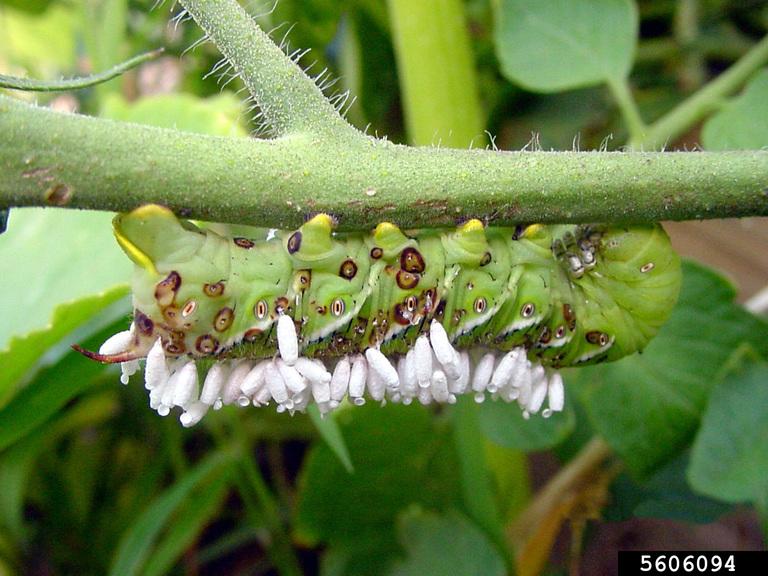
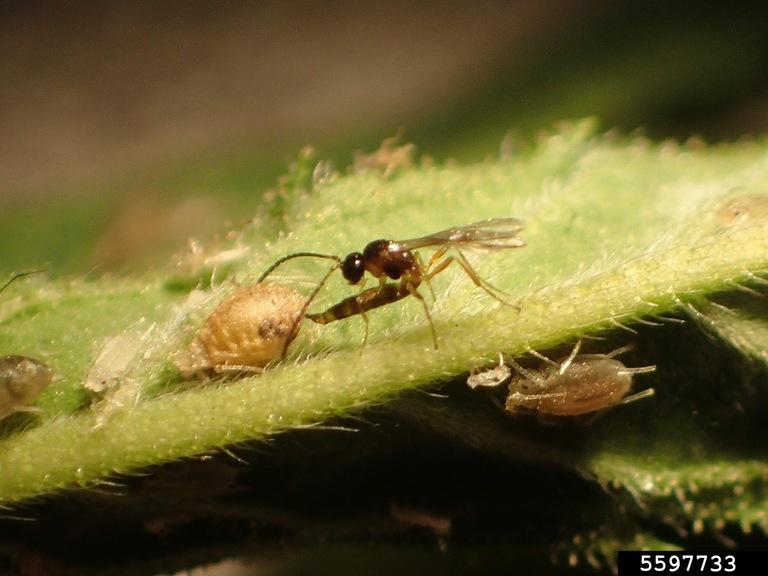
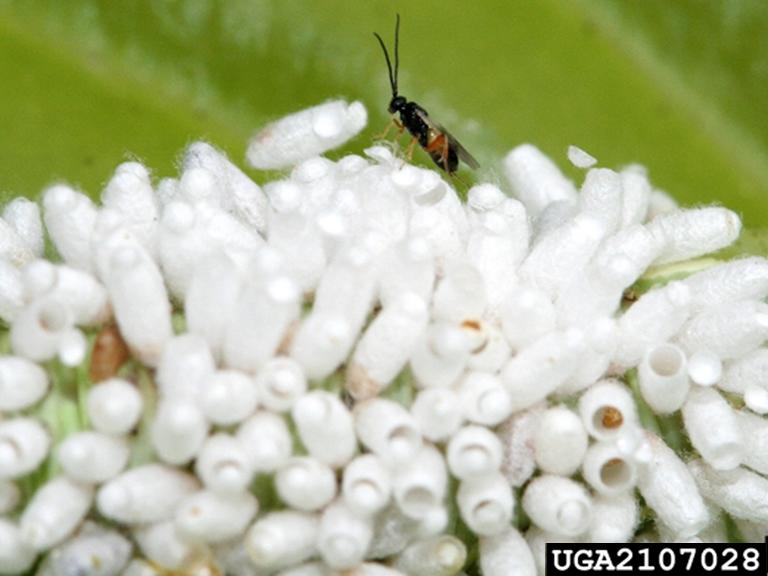
2. Family Ichneumonidae
The Ichneumonid family is the largest family of wasps, many of which are parasitoids of econimically important pests Nest: None, female lays egg inside of larval host Size: Medium/Large, 10 - 40 mm (0.4 - 2 in), ovipositor as long or longer than body
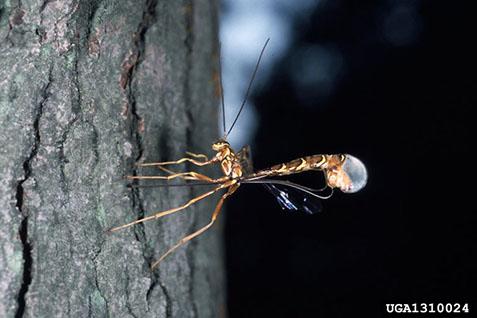
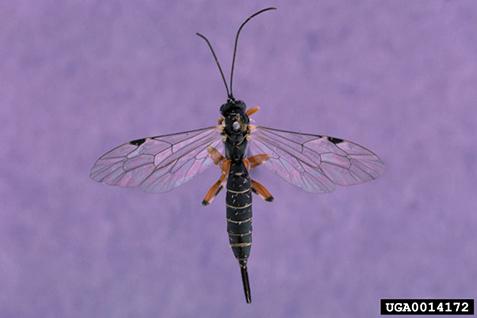
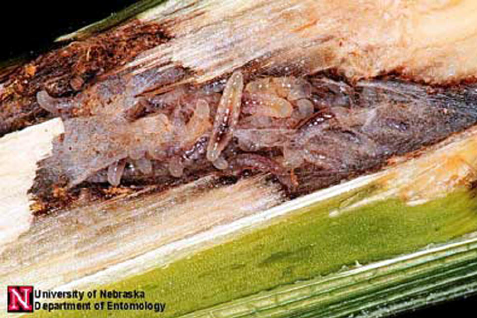
3. Family Crabronidae
Square-headed wasps and sand wasps are solitary hunting wasps Nest: Solitary, made in ground or soil is used to create nests on buildings; provisioned with various insect prey Size: Large, 25 - 50 mm (1 - 2 in)
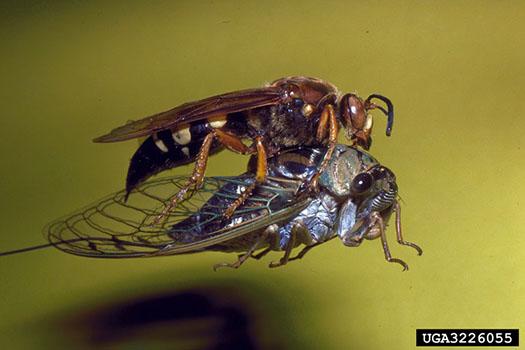
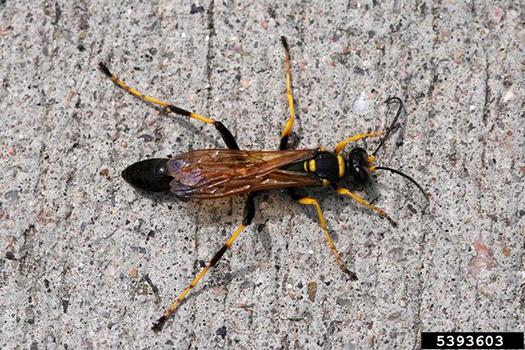
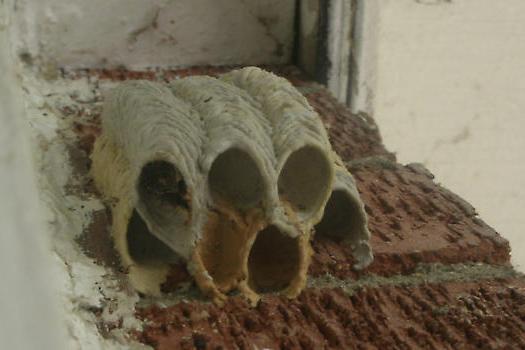
4. Family Sphecidae
Thread waisted wasps All species have a very narrow stalk-like anterior portion of their abdomen Size: Large, 15 - 35 mm (0.59 - 1.3 in) Nest: Solitary, burrows in ground or cavities of branches
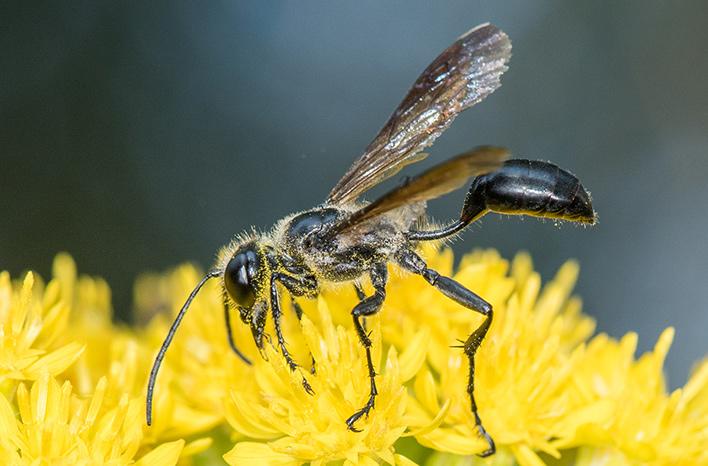
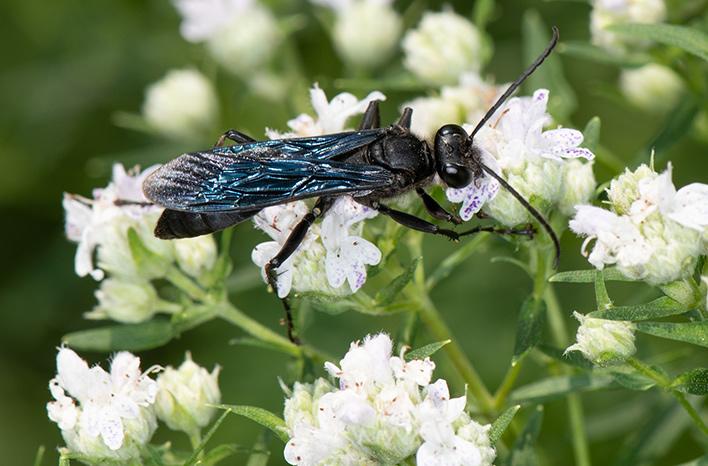
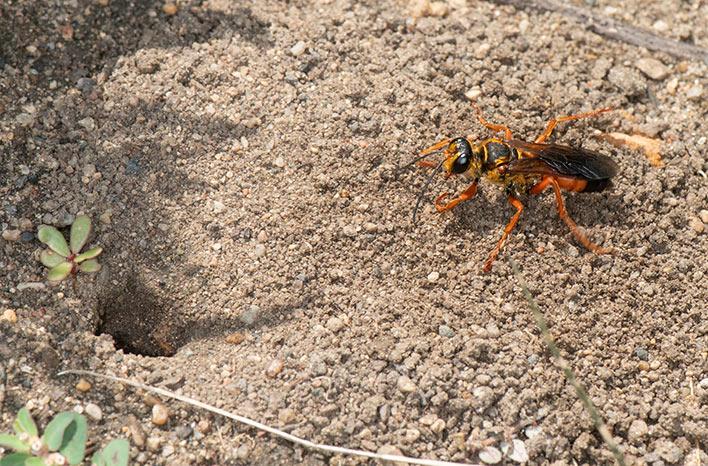
5. Family Mutillidae
Velvet ants are ectoparasitoids (egg laid on outside of prey, larvae feeds on host) Females: Flightless, very hairy, and may look like large ants but have no node (bump) on "waist" between abdomen and thorax Males: Have wings and are less hairy Nest: None as larvae live on the outside of the host Size: Small, 6 - 30 mm (0.2 - 1 in)
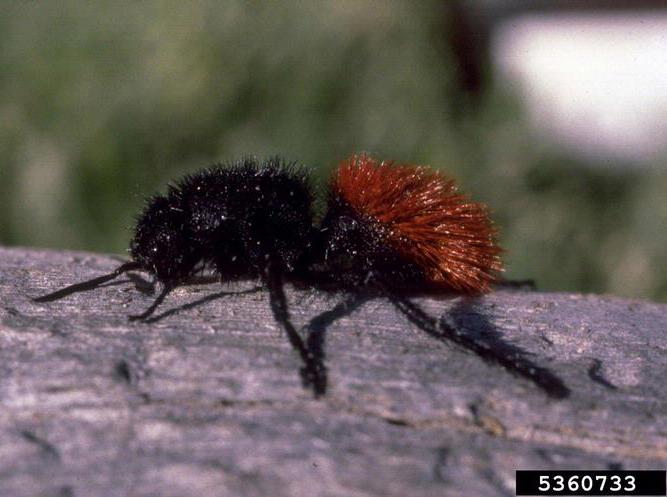
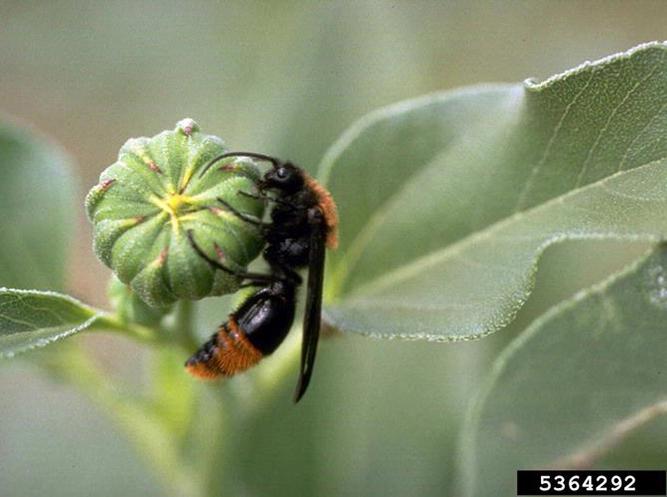
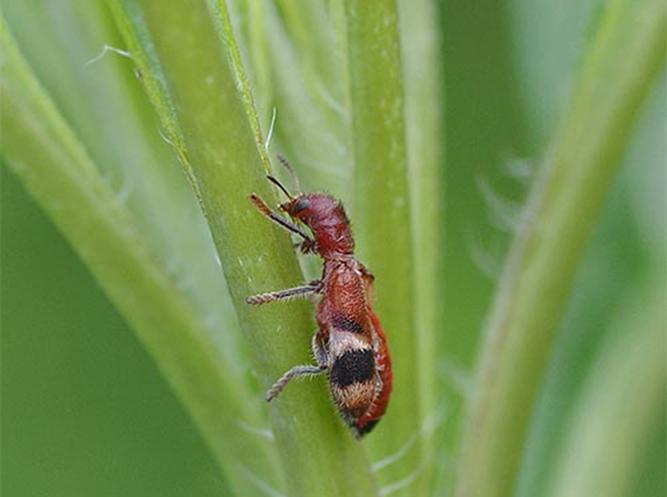
6. Family Pompilidae
Spider wasps are slender with long spiny legs Nest: Solitary, made in soil, rotten wood, or among rocks, nest is provisioned with a single spider Size: Large, 12 mm (0.5 in)
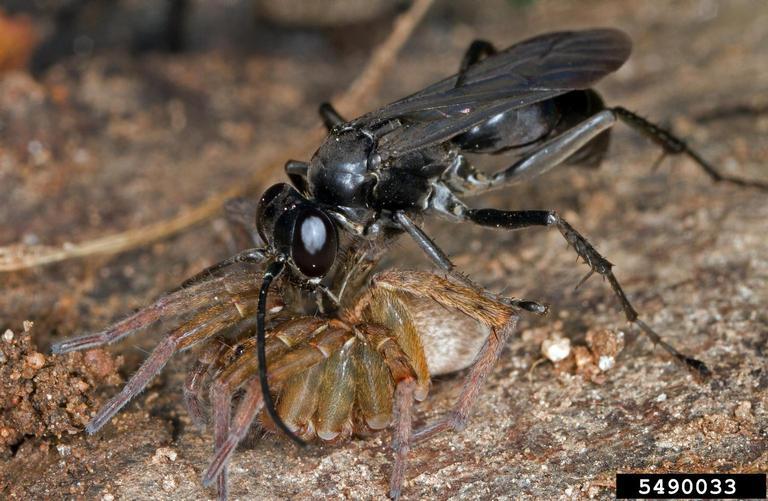
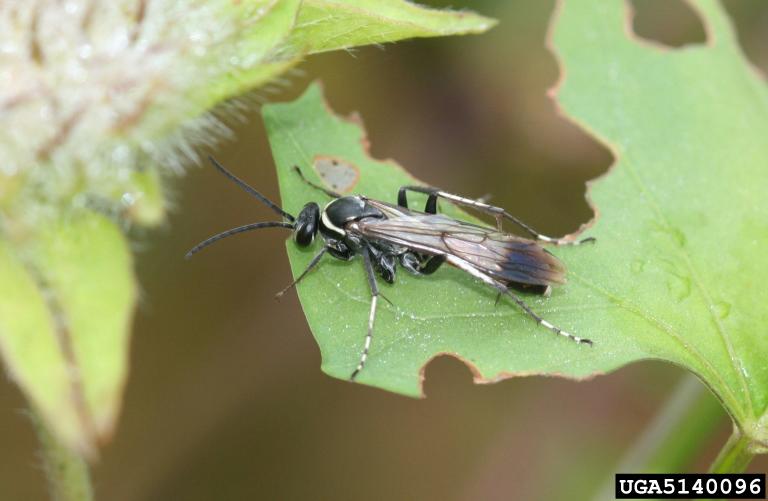
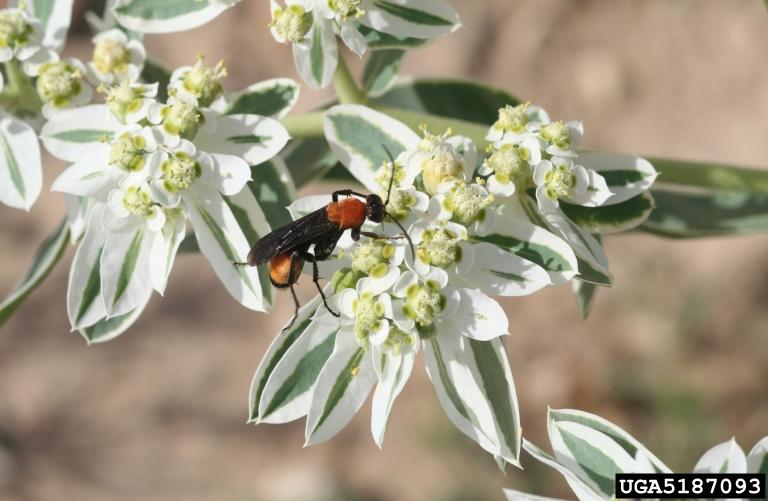
7. Family Scoliidae
Dielis trifasciata Black with three yellow bands Size: Medium, 10 - 15 mm (0.4 - 0.6 in) Nest: Solitary, burrows in ground
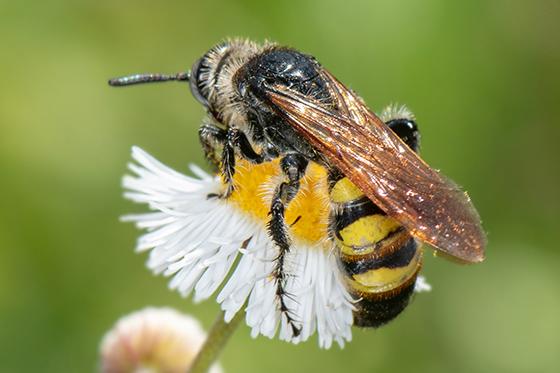
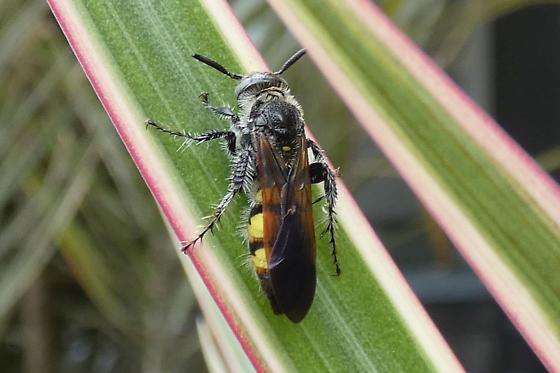
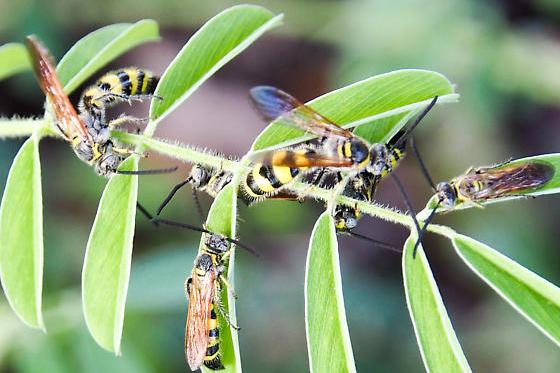
8. Family Tiphiidae
Tiphiid wasps are large, solitary, parasitoids of various beetle larvae, including Japanese beetle Nest: None; female lays a single egg on top of beetle larva Size: Medium/large, 11 - 18 mm (0.43 - 0.7 in)
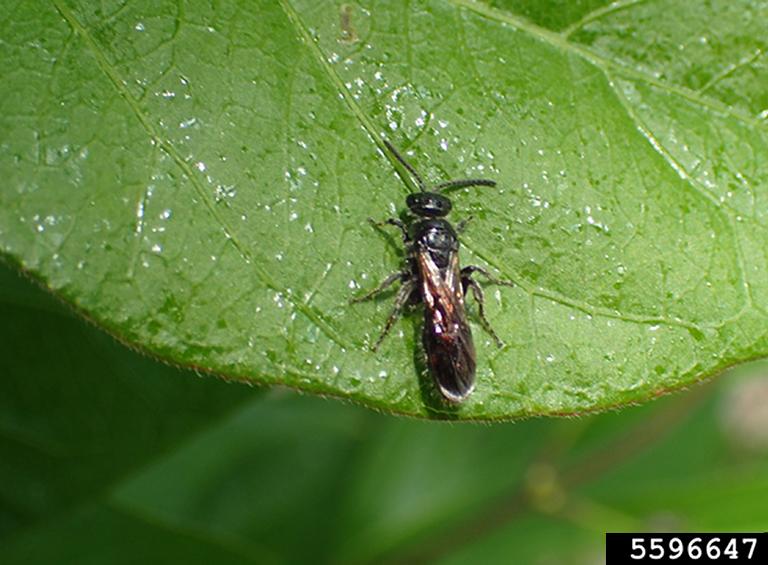
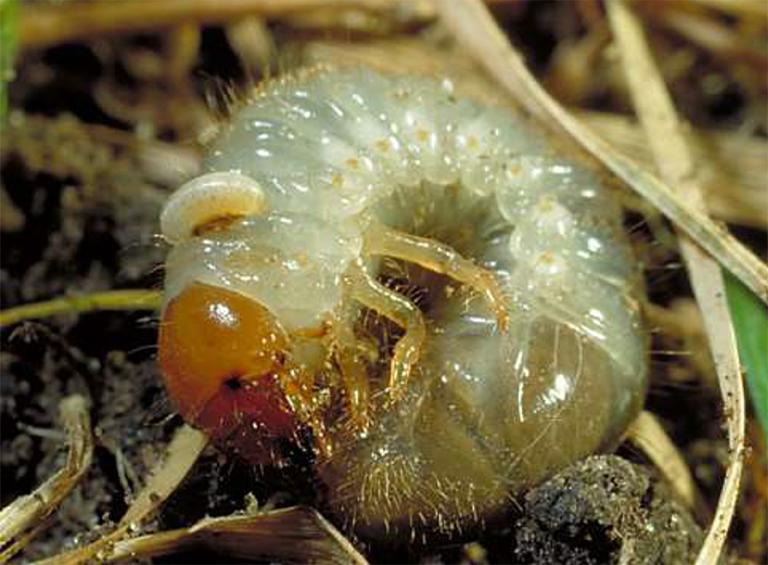
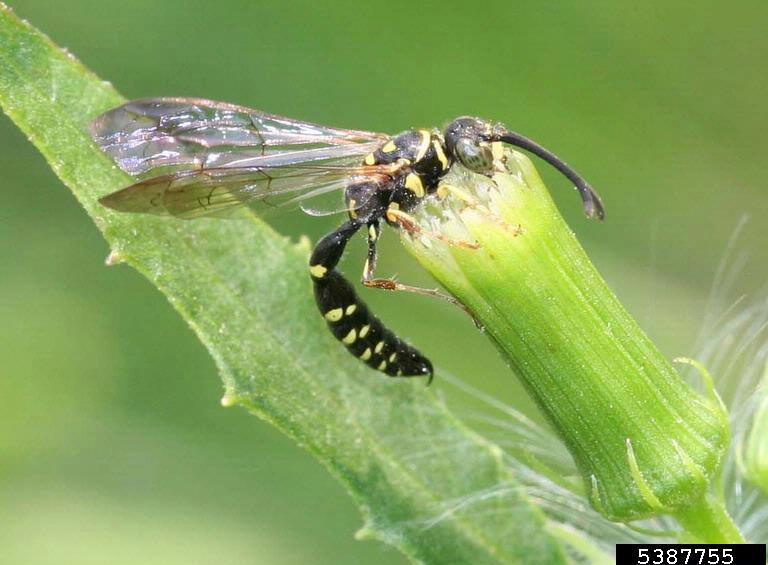
9. Vespidae
Yellowjackets, hornets, paper wasps, and potter wasps make up a very large family that has both social and solitary wasps Yellowjacket/hornet/paper wasp nest: Paper, nests can be in the ground or rotting wood, also attached to structures, can be very large (yellowjackets), multigenerational; Paper wasp nest: Paper, small, suspended from a surface by a petiole Potter wasp nest: Female makes a pot of clay as a nest and attaches it to vines and twigs as well exterior surfaces of building including Food: Larvae are fed premasticated insect prey Size: Medium/large, 12 - 32 mm (0.5 - 1.25 in)
